Work samples
-
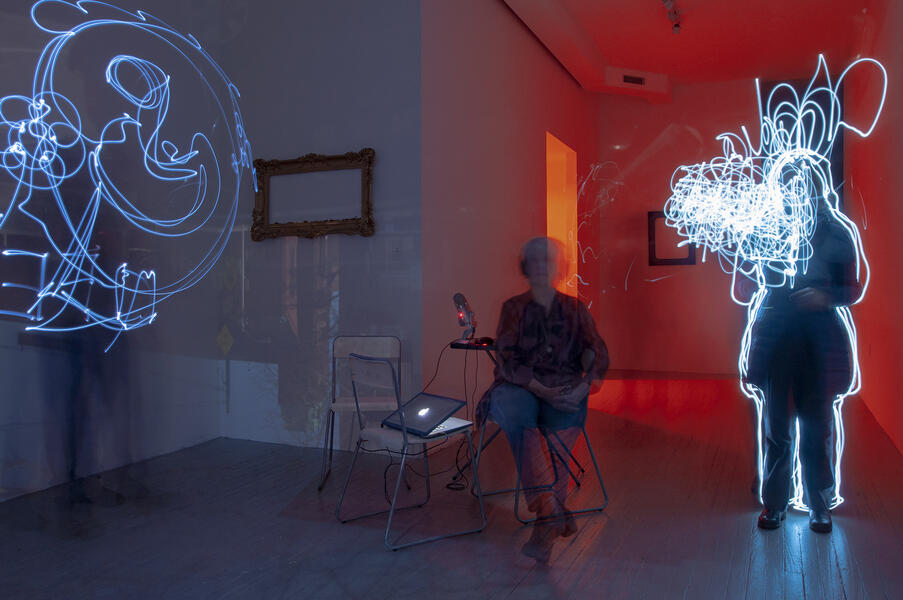 Camera Obscura Installation: Elder & WiserThis long exposure photograph is of participants and moderator Betsy Heeney made during a camera obscura installation at Gallery 1448 Baltimore. After moments of guided discussion on sight and understanding, people "wrote" in the room with penlights as a collaborative dance in silence. 18" x 24" digital print, 2019
Camera Obscura Installation: Elder & WiserThis long exposure photograph is of participants and moderator Betsy Heeney made during a camera obscura installation at Gallery 1448 Baltimore. After moments of guided discussion on sight and understanding, people "wrote" in the room with penlights as a collaborative dance in silence. 18" x 24" digital print, 2019 -
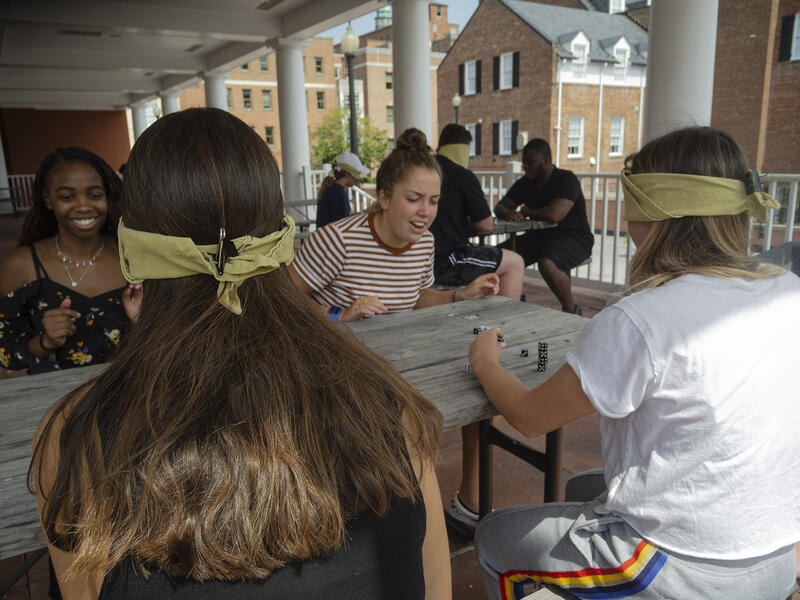 Dice and Blindfolds: a participatory game about trust and communicationDice and Blindfolds is a participatory game where players share roles in achieving the task of stacking dice while blindfolded. Dexterity is less helpful than strong listening skills. It is sometimes a warm-up or wrap-up component to broader community activities (performance, installation, exhibition). Participatory Performance (90 minutes) Washington DC 2019
Dice and Blindfolds: a participatory game about trust and communicationDice and Blindfolds is a participatory game where players share roles in achieving the task of stacking dice while blindfolded. Dexterity is less helpful than strong listening skills. It is sometimes a warm-up or wrap-up component to broader community activities (performance, installation, exhibition). Participatory Performance (90 minutes) Washington DC 2019 -
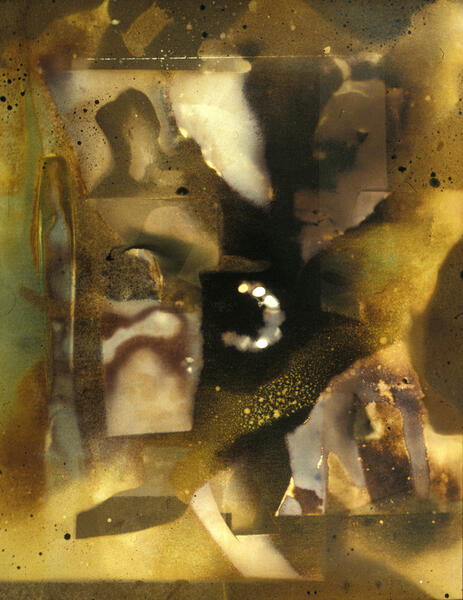 Gelatin Silver Print in Ambient Light (341)Gelatin Silver Prints in Ambient Light are camera-less images that explore the brute interaction of light and elements of chance and surprise. The resulting images are one-of-a-kind, like Daguerreotypes and other photo processes that engender neither negative nor copy. 10" x 8" series: 1987 - present, diverse sizes (4" x 5" to 8' murals)
Gelatin Silver Print in Ambient Light (341)Gelatin Silver Prints in Ambient Light are camera-less images that explore the brute interaction of light and elements of chance and surprise. The resulting images are one-of-a-kind, like Daguerreotypes and other photo processes that engender neither negative nor copy. 10" x 8" series: 1987 - present, diverse sizes (4" x 5" to 8' murals) -
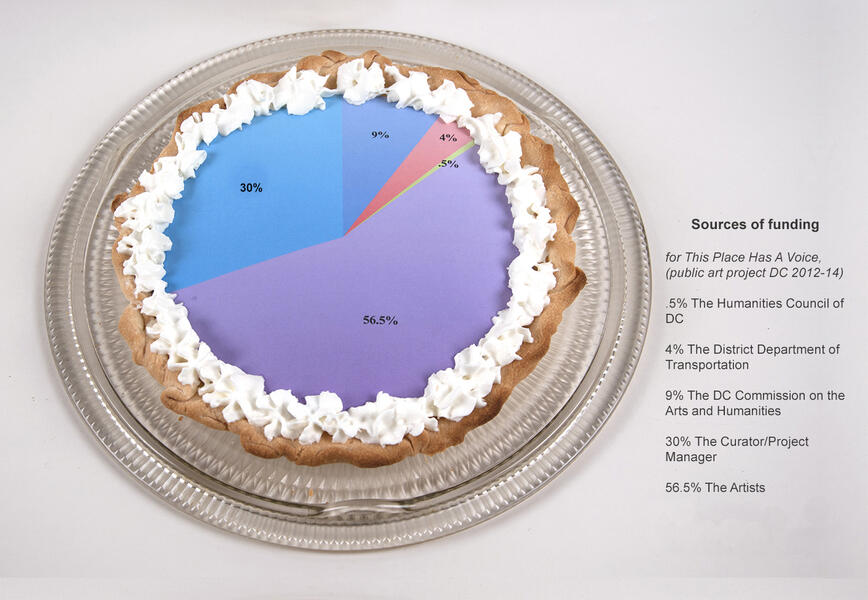 Edible pie chart: ethics in funding in the artsThis edible pie displays the breakdown of funding sources for This Place Has A Voice, a public art project in Washington DC 2014. Public funds are juxtaposed with funds contributed by the curator, artists, and historians who built the project. Edible pie chart 2014/repeatable 3”x9”x9”
Edible pie chart: ethics in funding in the artsThis edible pie displays the breakdown of funding sources for This Place Has A Voice, a public art project in Washington DC 2014. Public funds are juxtaposed with funds contributed by the curator, artists, and historians who built the project. Edible pie chart 2014/repeatable 3”x9”x9”
About Bruce
Baltimore City
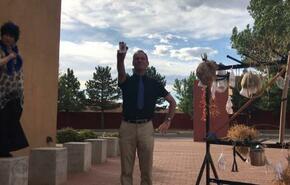
I examine workers and labor, using photography, installations, and community engagements. One example is Trade 4 Art, a barter network that I built in Baltimore between artists and tradespeople. Another example is Yard Work, a series of ephemeral portraits of lumberjacks that I print directly on leaves.
Materially, I use alternative photo processes to create images that examine alternative labor practices. My work has received support from the Cultural Affairs Department of Paris,… more
Jump to a project:
A View from the Inside Out
A View from the Inside Out
empathy and community through discovery and skill sharing
A View is a mentor-mentee program that includes broader community activities and advocacy work on healthy labor practices and policies. The mentor-mentee teams work independantly on their chosen art project, with a focus on skill sharing and transitioning the mentee to a mentor role. I connect Baltimore residents with artists working in photography, painting, book making, performance, time-lapse animations, installations, etc.
The independant teams also meet collectively to discuss, build, and host community-wide activities that engage neighbors, collegues, family, visitors. These activities can be participatory performances, interactive installations, murals, or exhibitions.
Finally, A View listens to participants hopes, concerns, experiences, and fears about their work and identity. This ear to the ground informs follow-up economic research and advocacy work for healthier labor practices. The research is shared with the general public, project partners, and policy makers to help increase awareness, empower citizens, and shape healthy labor practices. Outputs include info or motion graphcs, interactive timelines, op-eds, policy proposals.
A View is currently Baltimore based, examining ways to train others to be able to build similar projects in other cities and internationally.
empathy and community through discovery and skill sharing
A View is a mentor-mentee program that includes broader community activities and advocacy work on healthy labor practices and policies. The mentor-mentee teams work independantly on their chosen art project, with a focus on skill sharing and transitioning the mentee to a mentor role. I connect Baltimore residents with artists working in photography, painting, book making, performance, time-lapse animations, installations, etc.
The independant teams also meet collectively to discuss, build, and host community-wide activities that engage neighbors, collegues, family, visitors. These activities can be participatory performances, interactive installations, murals, or exhibitions.
Finally, A View listens to participants hopes, concerns, experiences, and fears about their work and identity. This ear to the ground informs follow-up economic research and advocacy work for healthier labor practices. The research is shared with the general public, project partners, and policy makers to help increase awareness, empower citizens, and shape healthy labor practices. Outputs include info or motion graphcs, interactive timelines, op-eds, policy proposals.
A View is currently Baltimore based, examining ways to train others to be able to build similar projects in other cities and internationally.
-
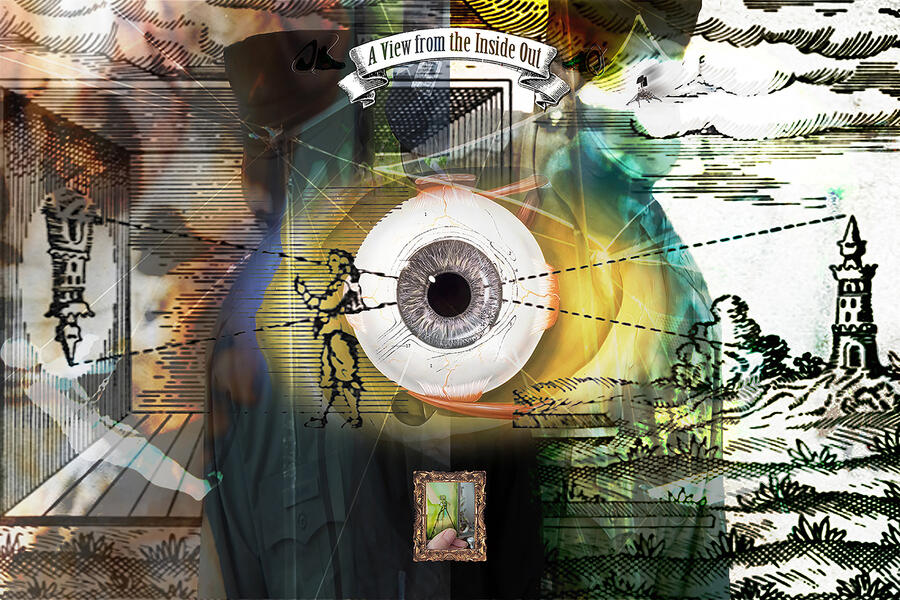 A View from the Inside OutThe ABCs of A View include: A. Advocating for healthier labor policies and practices, B. Building stronger communities through participatory decision making, C. Connecting artists with Baltimore residents for one-on-one mentor sessions. I pursue this work because the current divisive environment will not self-correct in a world of increasing anti-intellectualism. The costs of this systemic imbalance are unacceptable: anxiety, eating disorders, loneliness, and suicide are at record highs in the USA. 36" x 48" digital print on foam-core (pierced in the pupil as the aperture for a camera obscura) 2019
A View from the Inside OutThe ABCs of A View include: A. Advocating for healthier labor policies and practices, B. Building stronger communities through participatory decision making, C. Connecting artists with Baltimore residents for one-on-one mentor sessions. I pursue this work because the current divisive environment will not self-correct in a world of increasing anti-intellectualism. The costs of this systemic imbalance are unacceptable: anxiety, eating disorders, loneliness, and suicide are at record highs in the USA. 36" x 48" digital print on foam-core (pierced in the pupil as the aperture for a camera obscura) 2019 -
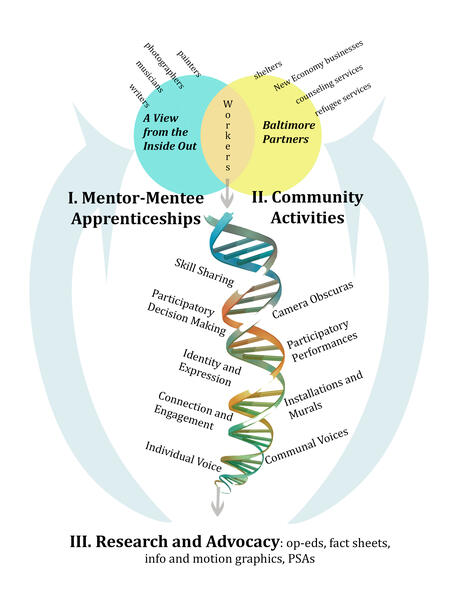 A View: informational diagramThis diagram illustrates how the mentor-mentee sessions, the community activities, and the advocacy work are interdependent and self-reinforcing. The mentor-mentee sessions focus on skill sharing. The mentee eventually becomes a Teaching Assistant and after another cycle of sessions becomes the teacher to a new mentee. Participants do more than sit and watch. They have a voice in decision making and develop new skills for making, eventually teaching, art, while building self-worth and communal connections. The teams of two work independently, and meet in plenary gatherings to identify, discuss and plan community activities open to the general public, neighbors, colleagues, family. The activity could be a participatory performance, mural, kinetic installation, exhibition, or publication in print or on the Web. Artists, mentees, and community share thoughts and examples of identity and their work experiences throughout the activities. These qualitative insights drive subsequent research on the economics of the involved industries. The research helps illustrate how individual experiences fit into the bigger picture of community and the economy. Research is shared as op-eds, info/motion graphics, policy statements, round table discussions. As well as sharing research with all participants, the material is shared with policy makers and other advocacy groups.
A View: informational diagramThis diagram illustrates how the mentor-mentee sessions, the community activities, and the advocacy work are interdependent and self-reinforcing. The mentor-mentee sessions focus on skill sharing. The mentee eventually becomes a Teaching Assistant and after another cycle of sessions becomes the teacher to a new mentee. Participants do more than sit and watch. They have a voice in decision making and develop new skills for making, eventually teaching, art, while building self-worth and communal connections. The teams of two work independently, and meet in plenary gatherings to identify, discuss and plan community activities open to the general public, neighbors, colleagues, family. The activity could be a participatory performance, mural, kinetic installation, exhibition, or publication in print or on the Web. Artists, mentees, and community share thoughts and examples of identity and their work experiences throughout the activities. These qualitative insights drive subsequent research on the economics of the involved industries. The research helps illustrate how individual experiences fit into the bigger picture of community and the economy. Research is shared as op-eds, info/motion graphics, policy statements, round table discussions. As well as sharing research with all participants, the material is shared with policy makers and other advocacy groups. -
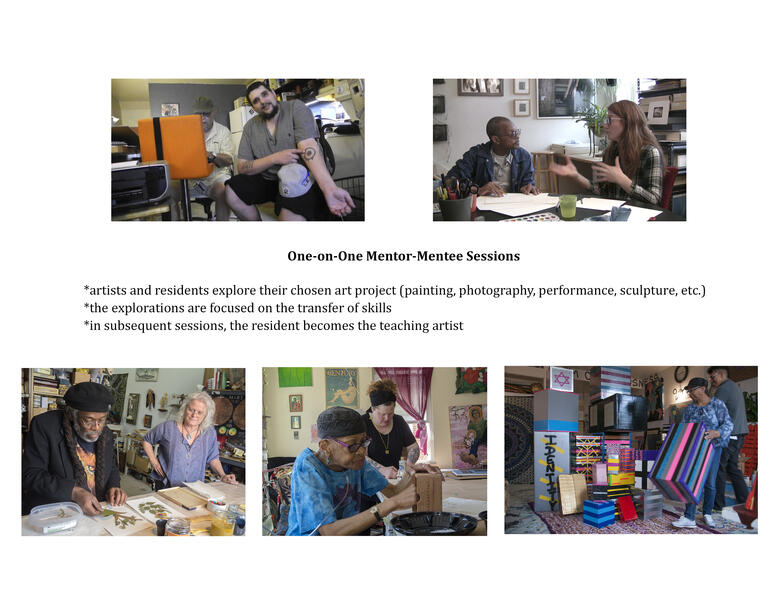 A View: Mentor - Mentee TeamsThe mentor-mentee program is premised on building sustainable relationships through the quality of one-on-one face time. As mentees cycle through the sessions, they acquire the skills to become Teaching Assistants and eventually teachers to new mentees. Collaborating artists teach diverse media: photography, painting, sculpture, drumming, tattoos, animation, etc. A View welcomes mentees' thoughts on what media to explore and tries to match their preference with an appropriate artist.
A View: Mentor - Mentee TeamsThe mentor-mentee program is premised on building sustainable relationships through the quality of one-on-one face time. As mentees cycle through the sessions, they acquire the skills to become Teaching Assistants and eventually teachers to new mentees. Collaborating artists teach diverse media: photography, painting, sculpture, drumming, tattoos, animation, etc. A View welcomes mentees' thoughts on what media to explore and tries to match their preference with an appropriate artist. -
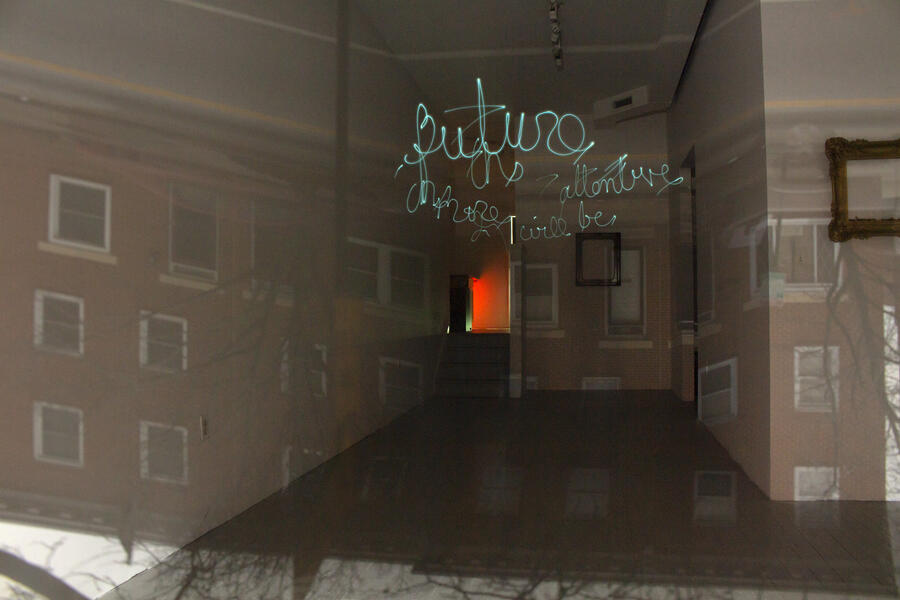 I will be more attentive_camera obscuraOne possible community activity is a room size camera obscura. In April 2019, IA View installed a camera obscura in Gallery 1448 in East Baltimore. Silence or discussion was shared in the room illuminated only by the outside world projected upside down over the walls. I invited small groups and individuals to experience the installation and express themselves through drawing or writing with lights in the air. One homeless neighbor wrote, "Next time, I will be more attentive." 18" x 24" digital print (4 minute exposure)
I will be more attentive_camera obscuraOne possible community activity is a room size camera obscura. In April 2019, IA View installed a camera obscura in Gallery 1448 in East Baltimore. Silence or discussion was shared in the room illuminated only by the outside world projected upside down over the walls. I invited small groups and individuals to experience the installation and express themselves through drawing or writing with lights in the air. One homeless neighbor wrote, "Next time, I will be more attentive." 18" x 24" digital print (4 minute exposure) -
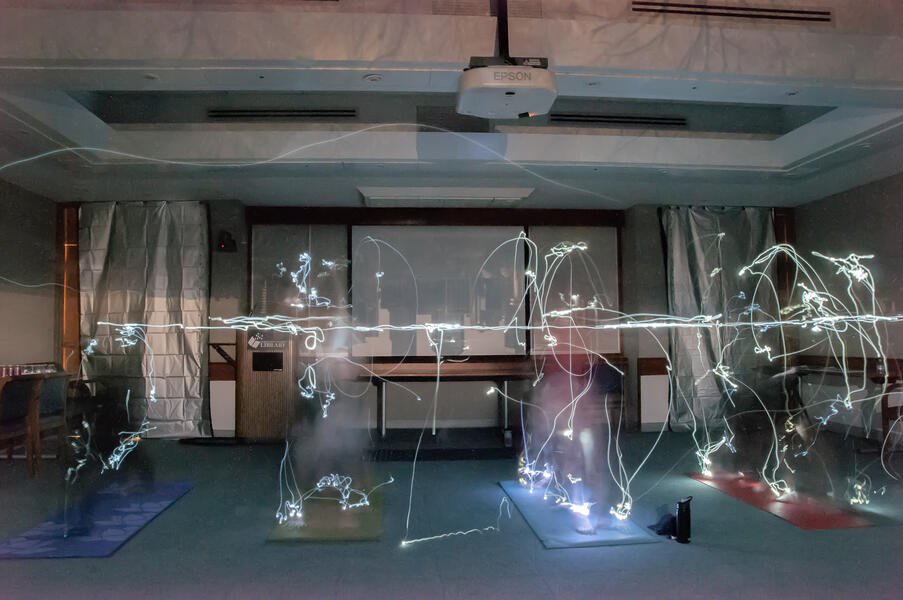 Camera obscura installation: yoga classSometimes a camera obscura can include additional activities. This installation in the library at Georgetown University 2019 hosted numerous activities, including a yoga class. Participants clipped lights to their clothing and were photographed during their practice. 18" x 24" digital print (6 minute exposure)
Camera obscura installation: yoga classSometimes a camera obscura can include additional activities. This installation in the library at Georgetown University 2019 hosted numerous activities, including a yoga class. Participants clipped lights to their clothing and were photographed during their practice. 18" x 24" digital print (6 minute exposure) -
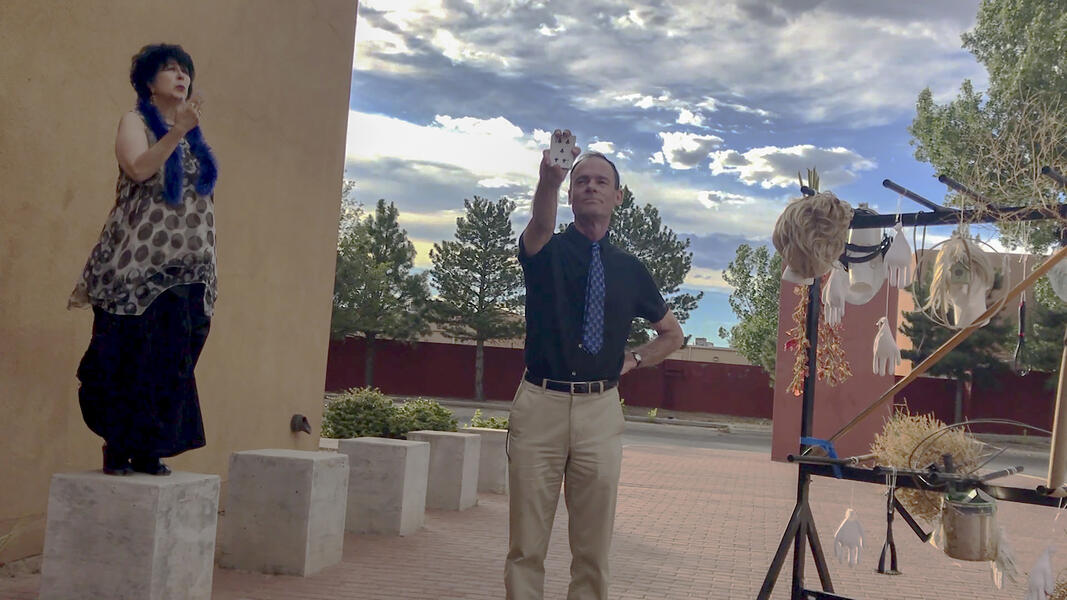 The Measured Step: magic, labor, complicityCommunity activities can include participatory performances. A Measured Step was a performance that guided people through a series of magic tricks and chats on how we measure the value of work. The tour visited installations I had dispersed over a recently abandoned campus. The tour guide was opera singer Cyndie Bellen-Berthezene. This was part of my work at The Santa Fe Art Institutes Equal Justice Residency 2018. participatory performance (45 minutes)
The Measured Step: magic, labor, complicityCommunity activities can include participatory performances. A Measured Step was a performance that guided people through a series of magic tricks and chats on how we measure the value of work. The tour visited installations I had dispersed over a recently abandoned campus. The tour guide was opera singer Cyndie Bellen-Berthezene. This was part of my work at The Santa Fe Art Institutes Equal Justice Residency 2018. participatory performance (45 minutes) -
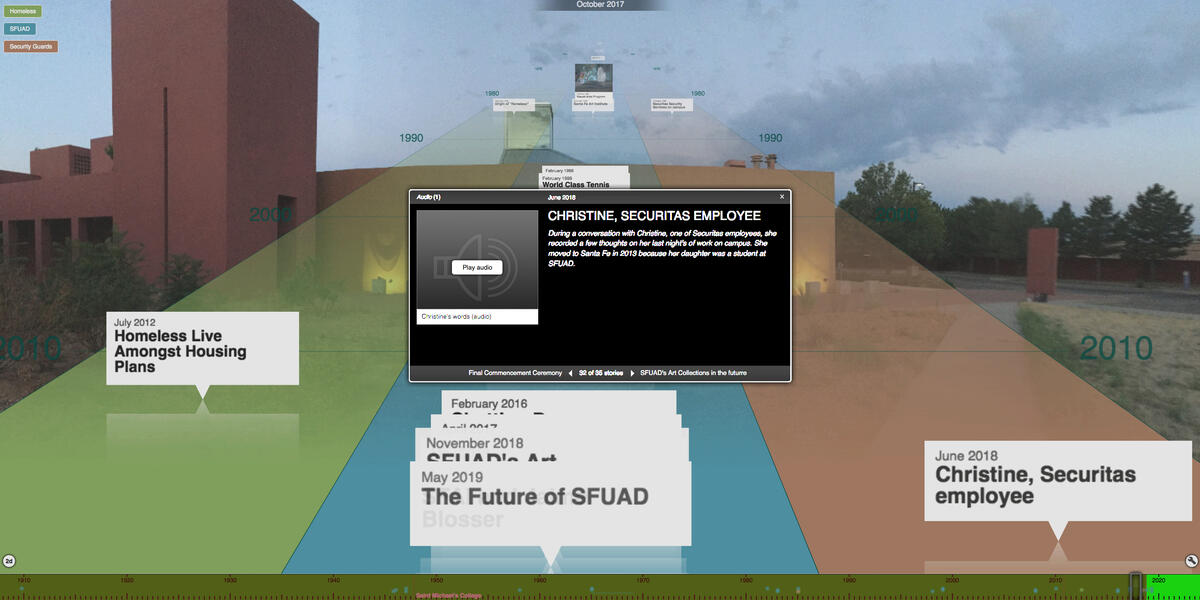 The Measured Step: interactive timelineThe Measured Step is also an interactive timeline that plots developments from the 1600s to 2018 for three demographics: homeless residents, security guards, substance challenged residents. The three demographics were geographically linked on the recently (2018) abandoned campus of the University of Art and Design at Santa Fe. The timeline includes interviews, press articles, legal developments that affect all three groups. The current version of the timeline is available at: https://www.tiki-toki.com/timeline/entry/1135855/The-Measured-Step-in-progress/ interactive timeline 1600s - 2018 (Tiki-Toki)
The Measured Step: interactive timelineThe Measured Step is also an interactive timeline that plots developments from the 1600s to 2018 for three demographics: homeless residents, security guards, substance challenged residents. The three demographics were geographically linked on the recently (2018) abandoned campus of the University of Art and Design at Santa Fe. The timeline includes interviews, press articles, legal developments that affect all three groups. The current version of the timeline is available at: https://www.tiki-toki.com/timeline/entry/1135855/The-Measured-Step-in-progress/ interactive timeline 1600s - 2018 (Tiki-Toki) -
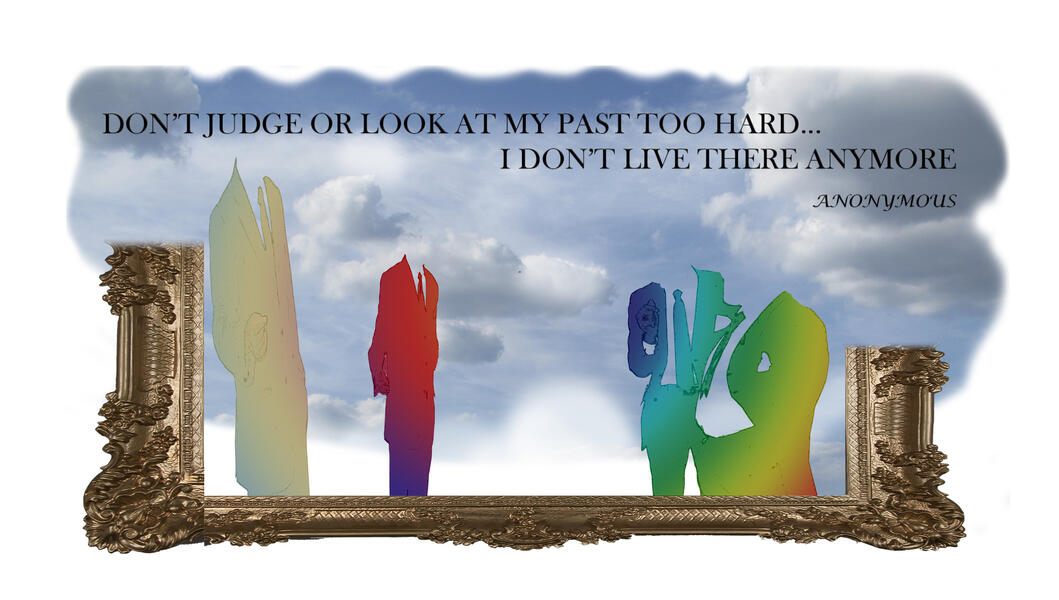 A View: Earl's Place mural design draftCommunity activities can include murals. This mural design is in collaboration between A View and Earl's Place, a men's transitional housing shelter in East Baltimore. We are currently seeking funding to install the mural which, by design, will be up-dated once a year by new artists and residents at Earl's Place. A View has collaborated with Earl's Place on numerous projects. mural proposal (paint, 6' x 14')
A View: Earl's Place mural design draftCommunity activities can include murals. This mural design is in collaboration between A View and Earl's Place, a men's transitional housing shelter in East Baltimore. We are currently seeking funding to install the mural which, by design, will be up-dated once a year by new artists and residents at Earl's Place. A View has collaborated with Earl's Place on numerous projects. mural proposal (paint, 6' x 14') -
 A Soiled Picture of Art and LaborThis op-ed was published in Inequality.org, as part of my work with the New Economy Maryland at the Institute for Policy Studies. It discusses ethics in funding practices in the arts, with reference to other industries (fast food workers, contract labor, adjunct faculty, etc.). op-ed (700 words)
A Soiled Picture of Art and LaborThis op-ed was published in Inequality.org, as part of my work with the New Economy Maryland at the Institute for Policy Studies. It discusses ethics in funding practices in the arts, with reference to other industries (fast food workers, contract labor, adjunct faculty, etc.). op-ed (700 words)
A Picture is Worth a Thousand Workers: the cowboy, the wrestler, the dictator
I had the opportunity to exhibit at the Notre Dame of Maryland University Fall 2018. I organized three "chapters' using the themes cowboy, wrestler, dictator. Each chapter began with photographs that I made in years past and ended with images that I selected from research into tangents from each starting point. Cowboy (Ft Worth Stockyards 1987) became a look at historical roles cowboys played in developing the West, masculinity and male archeotypes, ending with a look at the current US-Mexican border debate. Wrestler (Johnny Angel, amateur wrestler photographed 1982/3) became a survey of how we define and measure the value of work. Dictator (images from Lenin's summer home outside of [then] Leningrad 1982) became a look at Soviet propoganda photos, ending with a look at fake news and alt facts today.
As well as the exhibition, I hosted a participatory theater event: A Parlor Game in the Library. Participants followed instructions to complete tasks, then listened to four guests’ thoughts on the value of labor, followed by Q&As while sharing a cake decorated with edible statistics on the value of unpaid work. Speakers included Heather Carpenter (economist), Chrysalinn Archie (Gift Economy), Ademar Bechtold (economist), Stephanie Geller (Community Organizer). Hosted by Notre Dame of Maryland University.
The press release stated: Bruce McKaig's practice explores the power of images to reshape realities, sometimes juxtaposing antiquated techniques or objects with contemporary themes and issues. This exhibition, organized around three series -- the cowboy, the wrestler, and the dictator -- combines McKaig's own artworks with curated images and materials that explore some of the historical and current cultural and socio-economic relationships between photography and those themes.
As well as the exhibition, I hosted a participatory theater event: A Parlor Game in the Library. Participants followed instructions to complete tasks, then listened to four guests’ thoughts on the value of labor, followed by Q&As while sharing a cake decorated with edible statistics on the value of unpaid work. Speakers included Heather Carpenter (economist), Chrysalinn Archie (Gift Economy), Ademar Bechtold (economist), Stephanie Geller (Community Organizer). Hosted by Notre Dame of Maryland University.
The press release stated: Bruce McKaig's practice explores the power of images to reshape realities, sometimes juxtaposing antiquated techniques or objects with contemporary themes and issues. This exhibition, organized around three series -- the cowboy, the wrestler, and the dictator -- combines McKaig's own artworks with curated images and materials that explore some of the historical and current cultural and socio-economic relationships between photography and those themes.
-
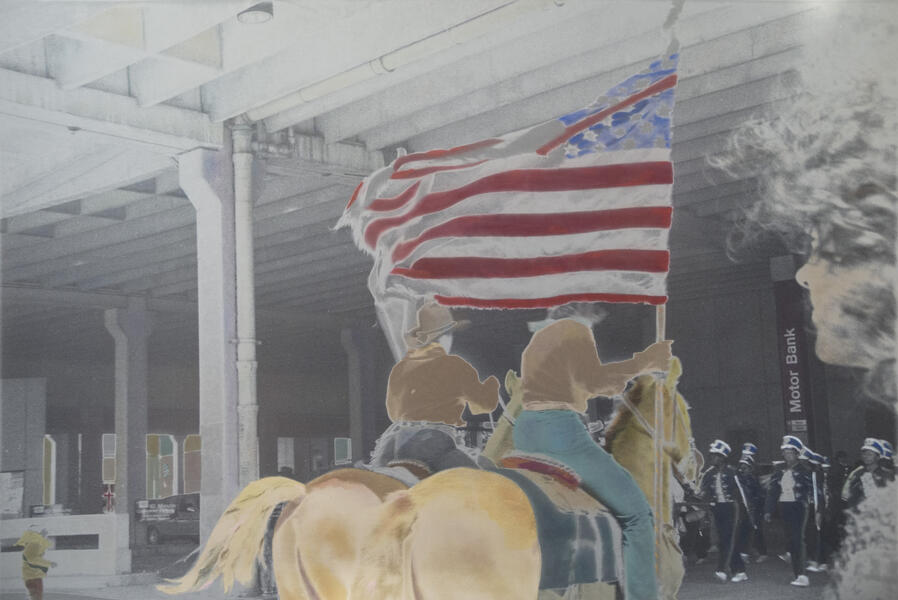 Cowboy02Each of the three chapters in this exhibition started with highly manipulated darkroom photographs I made in years past. For Cowboys, this is a hand colored photograph from a visit to the Ft. Worth Stock Yards parade. 12" x 16" water color on gelatin silver print (one-of-a-kind) 1987
Cowboy02Each of the three chapters in this exhibition started with highly manipulated darkroom photographs I made in years past. For Cowboys, this is a hand colored photograph from a visit to the Ft. Worth Stock Yards parade. 12" x 16" water color on gelatin silver print (one-of-a-kind) 1987 -
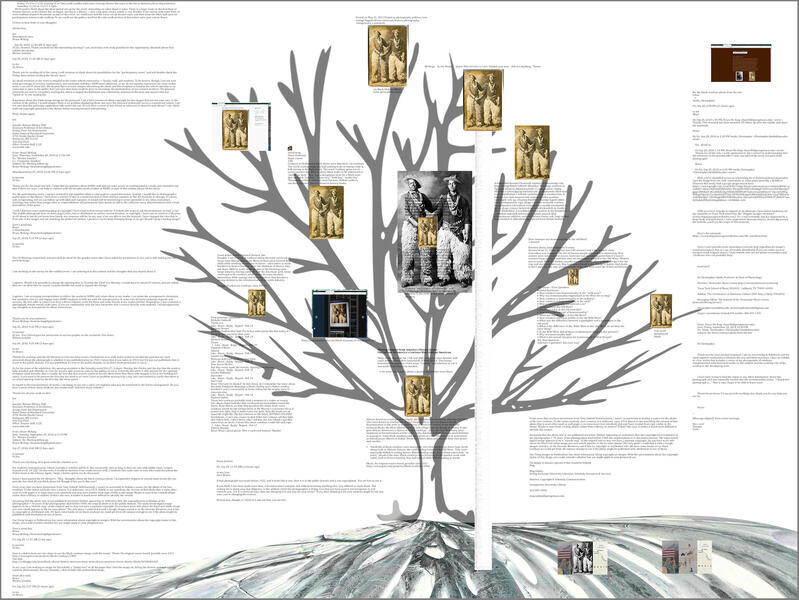 Hanging Pictures: Black Cowboys 1913This charts the efforts to identify the portrait’s author, subjects, and copyright status. The numerous virtual homes of the image are accompanied by texts from the sites - referencing homosexuality, fashion, slavery, even Celtic music. It also includes emails from historians, archivists, curators, and librarians about the image. It is a look at the proliferation of words and claims of authenticity in the absence of facts. 36" x 48" digital print 2018
Hanging Pictures: Black Cowboys 1913This charts the efforts to identify the portrait’s author, subjects, and copyright status. The numerous virtual homes of the image are accompanied by texts from the sites - referencing homosexuality, fashion, slavery, even Celtic music. It also includes emails from historians, archivists, curators, and librarians about the image. It is a look at the proliferation of words and claims of authenticity in the absence of facts. 36" x 48" digital print 2018 -
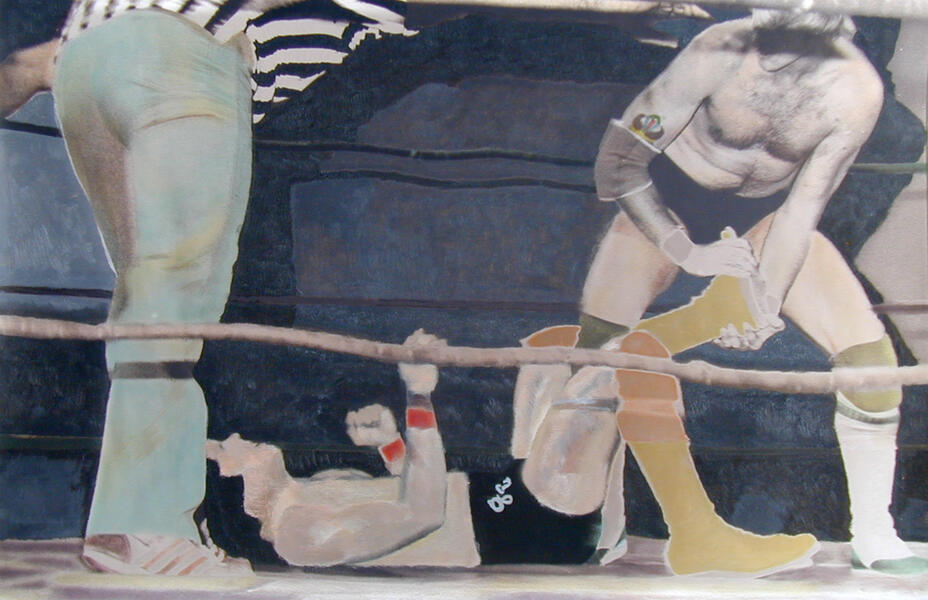 Wrestler02Each of the three chapters in this exhibition started with highly manipulated darkroom photographs I made in years past. For Wrestler, this is a hand colored image from the +15 months I photographed Johnny Angel an amateur wrestler in Ft. Worth Texas. 12" x 16" oil sticks on geltain silver print (one-of-a-kind) 1989
Wrestler02Each of the three chapters in this exhibition started with highly manipulated darkroom photographs I made in years past. For Wrestler, this is a hand colored image from the +15 months I photographed Johnny Angel an amateur wrestler in Ft. Worth Texas. 12" x 16" oil sticks on geltain silver print (one-of-a-kind) 1989 -
 The wrestler: thoughts on how to define and measure "work"Hand colored photographs of an amateur wrestler were installed alongside information about the contribution of volunteerism to community. Quests were invited to write their thoughts on volunteerism on mirrors. The mirrors had quotes from economists and historians clipped to them, for instance: “The sign that we are seeing method not reality,” Edward Tufte. participatory installation (mirrors, colored markers, text) 2018
The wrestler: thoughts on how to define and measure "work"Hand colored photographs of an amateur wrestler were installed alongside information about the contribution of volunteerism to community. Quests were invited to write their thoughts on volunteerism on mirrors. The mirrors had quotes from economists and historians clipped to them, for instance: “The sign that we are seeing method not reality,” Edward Tufte. participatory installation (mirrors, colored markers, text) 2018 -
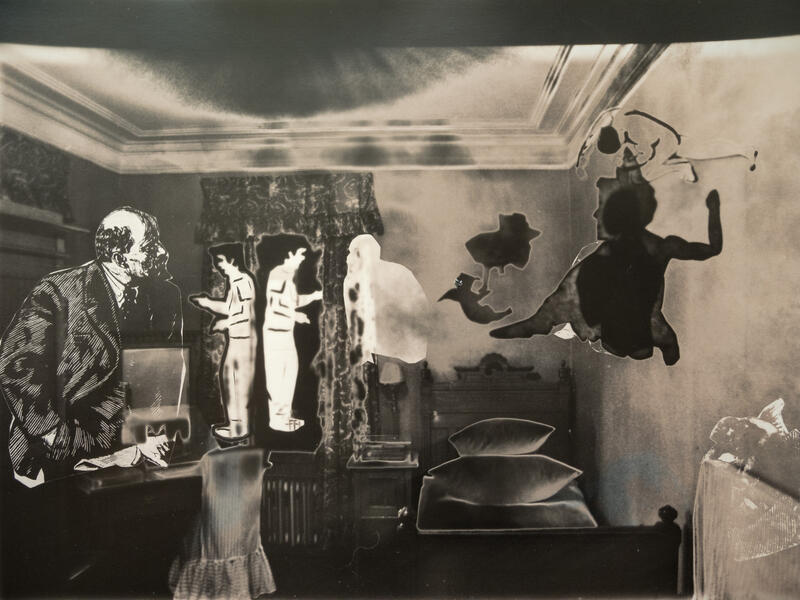 Lenin's Summer HomeEach of the three chapters in this exhibition started with highly manipulated darkroom photographs I made in years past. This is a one-of-a-kind silver gelatin print/photogram from a visit to Lenin's summer home outside what was then called Leningrad. 12" x 16" toned gelatin silver print/photogram (one-of-a-kind) 1990
Lenin's Summer HomeEach of the three chapters in this exhibition started with highly manipulated darkroom photographs I made in years past. This is a one-of-a-kind silver gelatin print/photogram from a visit to Lenin's summer home outside what was then called Leningrad. 12" x 16" toned gelatin silver print/photogram (one-of-a-kind) 1990 -
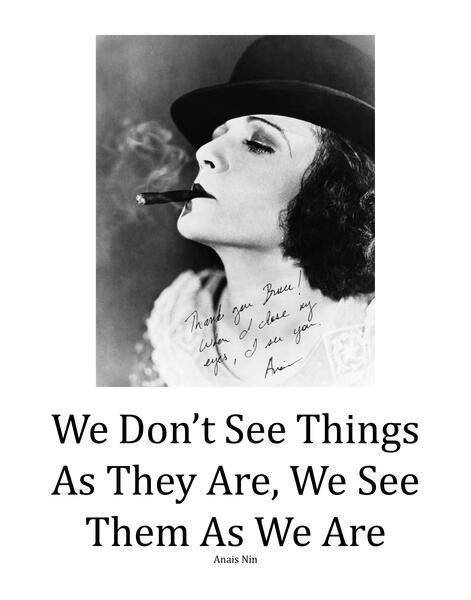 Anais Nin_fake newsWorks in the Dictator section of this exhibit included this quote about the veracity of sight (photography) by Anais Nin. I added a faux autograph by Nin praising me. 11" x 8.5" digital print 2018
Anais Nin_fake newsWorks in the Dictator section of this exhibit included this quote about the veracity of sight (photography) by Anais Nin. I added a faux autograph by Nin praising me. 11" x 8.5" digital print 2018 -
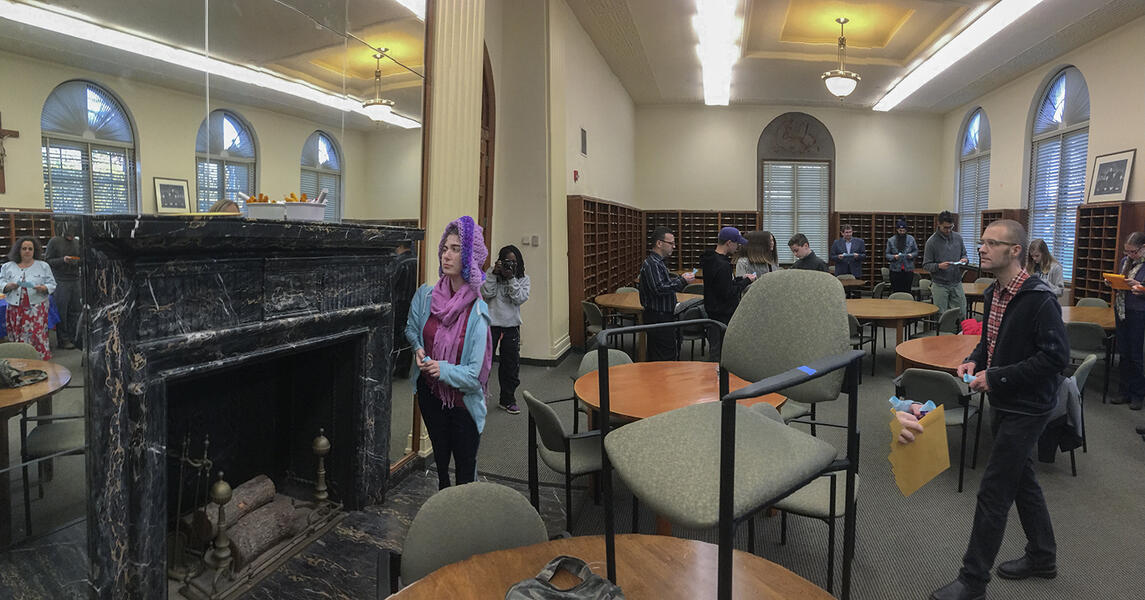 The Parlor Game (collaborative/competitive tasks)Participants followed instructions to complete tasks, then listen to four guests’ thoughts on the value of labor, followed by Q&As while sharing a cake decorated with edible statistics on the value of unpaid work. Speakers included Heather Carpenter (economist), Chrysalinn Archie (Gift Economy), Ademar Bechtold (economist), Stephanie Geller (Community Organizer). Hosted by Notre Dame of Maryland University. participatory performance + guest speakers on work and volunteerism (2 hours) 2018
The Parlor Game (collaborative/competitive tasks)Participants followed instructions to complete tasks, then listen to four guests’ thoughts on the value of labor, followed by Q&As while sharing a cake decorated with edible statistics on the value of unpaid work. Speakers included Heather Carpenter (economist), Chrysalinn Archie (Gift Economy), Ademar Bechtold (economist), Stephanie Geller (Community Organizer). Hosted by Notre Dame of Maryland University. participatory performance + guest speakers on work and volunteerism (2 hours) 2018 -
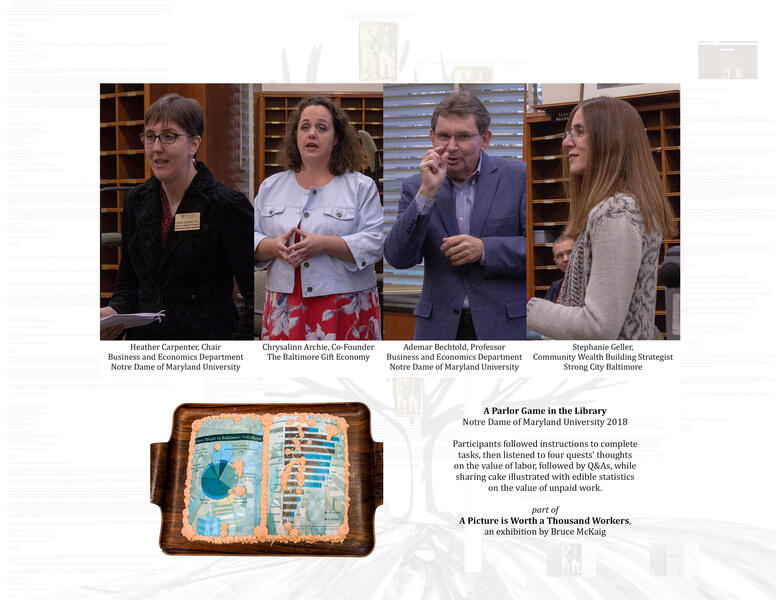 The Parlor GameAfter the "game" component to the performance, four speakers shared insights in how the US defines and measures work and compensation. The event concluded with informal conversations and slices of cake decorated with edible statistics on volunteerism in Maryland USA. participatory performance, guest speakers, cake (2 hours) 2018
The Parlor GameAfter the "game" component to the performance, four speakers shared insights in how the US defines and measures work and compensation. The event concluded with informal conversations and slices of cake decorated with edible statistics on volunteerism in Maryland USA. participatory performance, guest speakers, cake (2 hours) 2018
Scoioeconomics
My undergraduate (BA Austin College 1981) and graduate degrees (MSFS Georgetown University, with Distinction, 1986) are in Economics. This training informs some of my practice. I sometimes juxtapose antiquated techniques or objects with contemporary themes and issues. Examples include a zoetrope on climate change, a photo standin on income inequality, an edible pie chart on ethics in funding.
Kenneth Roth writes, “The global rise of populism is a dangerous threat to democracy and human rights. Many people feel left behind by the global economy, and growing inequality.” Naomi Klein adds, ““People have lost their sense of security and identity under neoliberal policies of deregulation, privatization and corporate trade.” George Monbiot links this loss to “mental illness, anxiety, stress, depression, social phobia, eating disorders, self-harm and loneliness.”
In the arts, Barry Kehoe specifies: ”One must wade through a fog of mythology surrounding concepts of genius, colonial appropriation, and social Darwinism.” A similar “fog of mythology” cloaks contemporary econometrics. Gross Domestic Product (GDP) persists as the definitive measure of well-being. Whereas GDP quantifies economic activity, it cannot frame such activity within individual or communal values. A train wreck that results in death, hospitalizations, and lawsuits increases GDP.
Thinking about what constitutes "Art" (A fake want-ad offering to end someone's debt? A barter network?) helps me examine and promote New Economy thoughts on what constitutes well-being. Social practice, community based, new genre public art join the world of painting and ballet. Local currency, worker owned, B-Corps, and barter networks join the world of profit maximization and contract labor.
Kenneth Roth writes, “The global rise of populism is a dangerous threat to democracy and human rights. Many people feel left behind by the global economy, and growing inequality.” Naomi Klein adds, ““People have lost their sense of security and identity under neoliberal policies of deregulation, privatization and corporate trade.” George Monbiot links this loss to “mental illness, anxiety, stress, depression, social phobia, eating disorders, self-harm and loneliness.”
In the arts, Barry Kehoe specifies: ”One must wade through a fog of mythology surrounding concepts of genius, colonial appropriation, and social Darwinism.” A similar “fog of mythology” cloaks contemporary econometrics. Gross Domestic Product (GDP) persists as the definitive measure of well-being. Whereas GDP quantifies economic activity, it cannot frame such activity within individual or communal values. A train wreck that results in death, hospitalizations, and lawsuits increases GDP.
Thinking about what constitutes "Art" (A fake want-ad offering to end someone's debt? A barter network?) helps me examine and promote New Economy thoughts on what constitutes well-being. Social practice, community based, new genre public art join the world of painting and ballet. Local currency, worker owned, B-Corps, and barter networks join the world of profit maximization and contract labor.
-
Trade4ArtI was awarded a 2016 Crusade for Art grant to build a barter network in Baltimore between artists and tradespeople (electricians, plumbers, carpenters, care givers). This is an example of my practice drawing from both my art and my economics background. This video was part of my installation in the 2017 Sondheim semifinalists exhibition at the MICA Meyerhoff Gallery. video (barter program) 6 minutes 2017
-
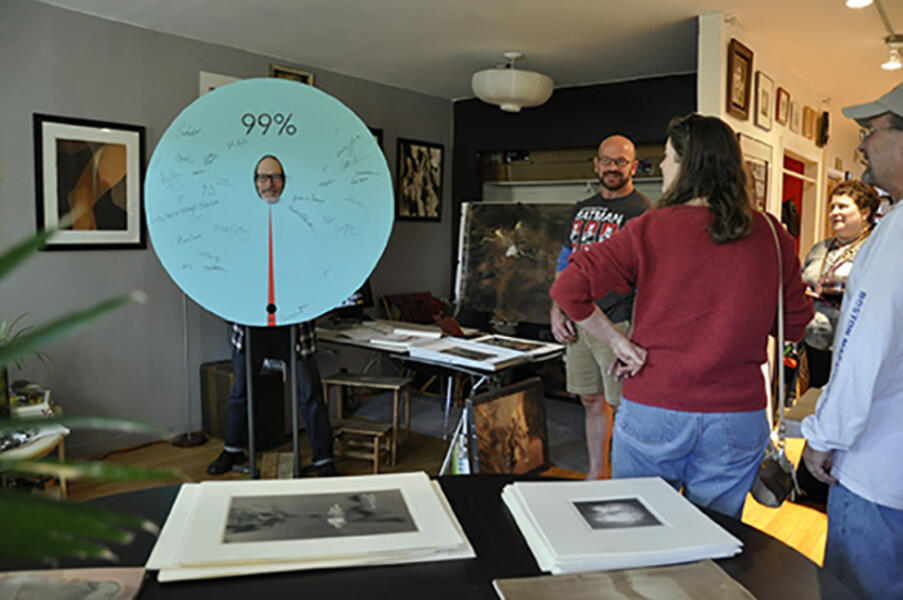 99 % Photo StandinHere is a link to a two-minute time-lapse of visitors to a BOPA Open Studio Tour (2015) posing in the 99 Percent standin, which uses a simple pie chart to display income inequality in the US. After posing, visitors can sign their name to the front of the chart. It can be inverted should a member of the top 1 percent be available to pose: https://vimeo.com/142028212 7' x 4' x 3' participatory sculpture (wood, paint, markers, metal) 2015
99 % Photo StandinHere is a link to a two-minute time-lapse of visitors to a BOPA Open Studio Tour (2015) posing in the 99 Percent standin, which uses a simple pie chart to display income inequality in the US. After posing, visitors can sign their name to the front of the chart. It can be inverted should a member of the top 1 percent be available to pose: https://vimeo.com/142028212 7' x 4' x 3' participatory sculpture (wood, paint, markers, metal) 2015 -
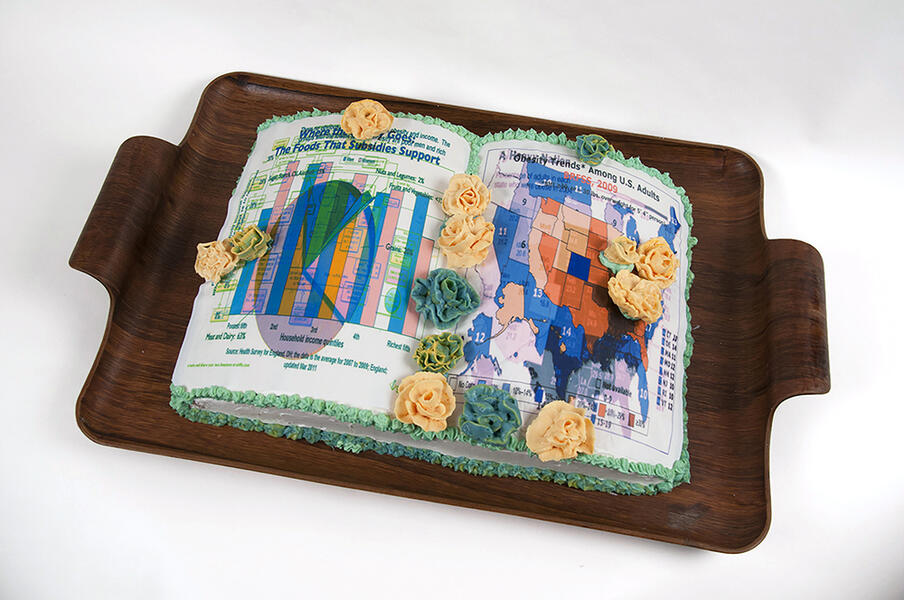 Let Them Eat CakeA ready-to-eat cake in the shape of an open book, decorated with edible graphics juxtaposing federal food subsidies and US obesity rates broken down by state. The cake can be served at events, delivered to implicated community members or policy makers, or experienced as part of a Cakewalk: "a carnivalesque tradition of mimicry on plantations, when slaves would parody the affectations of the upper classes. Somewhere in its long history, its origins as, first, a coded act of defiance, and then a mass cultural phenomenon that evolved into minstrel performances were lost. Most of us now know the Cakewalk as a fundraising event hosted by churches and schools, though it originated from cultural practices born of slavery." (Anna Helgeson) 5”x14”x18” (cake, edible graphics) 2014/repeatable
Let Them Eat CakeA ready-to-eat cake in the shape of an open book, decorated with edible graphics juxtaposing federal food subsidies and US obesity rates broken down by state. The cake can be served at events, delivered to implicated community members or policy makers, or experienced as part of a Cakewalk: "a carnivalesque tradition of mimicry on plantations, when slaves would parody the affectations of the upper classes. Somewhere in its long history, its origins as, first, a coded act of defiance, and then a mass cultural phenomenon that evolved into minstrel performances were lost. Most of us now know the Cakewalk as a fundraising event hosted by churches and schools, though it originated from cultural practices born of slavery." (Anna Helgeson) 5”x14”x18” (cake, edible graphics) 2014/repeatable -
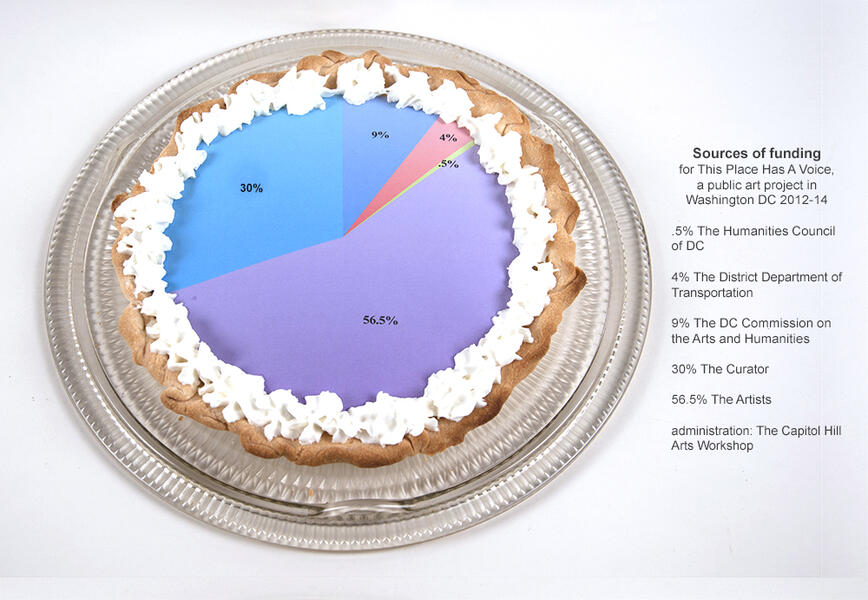 Edible Pie Chart: funding in the artsThis edible pie displays the breakdown of funding sources for This Place Has A Voice, a public art project in Washington DC 2014. Public funds are juxtaposed with funds contributed by the curator, artists, and historians who built the project. Edible pie chart (diverse fillings, edible graphic) 2014/repeatable 3”x9”x9”
Edible Pie Chart: funding in the artsThis edible pie displays the breakdown of funding sources for This Place Has A Voice, a public art project in Washington DC 2014. Public funds are juxtaposed with funds contributed by the curator, artists, and historians who built the project. Edible pie chart (diverse fillings, edible graphic) 2014/repeatable 3”x9”x9” -
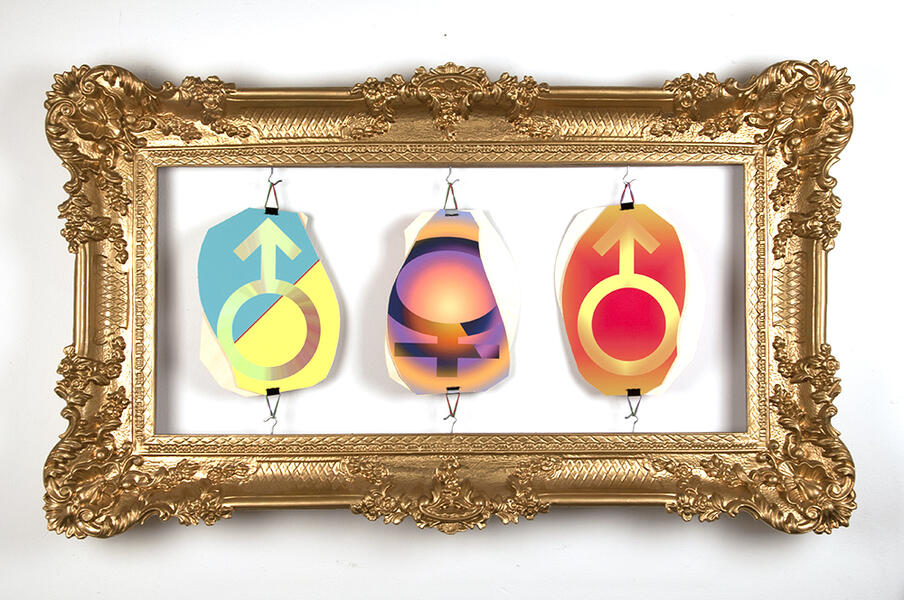 Gender TwistsGender Twists A trilogy of functional thaumatropes suspended in a gold painted frame. When they spin,they blur all distinctions between gender symbols and they literally no longer fit inside the frame. Against a wall, all movement is blocked. Freestanding, they spin until there is no more tension in their bonds. 25”x38”x10” (wood, resin frame, rubber, digital prints) 2014
Gender TwistsGender Twists A trilogy of functional thaumatropes suspended in a gold painted frame. When they spin,they blur all distinctions between gender symbols and they literally no longer fit inside the frame. Against a wall, all movement is blocked. Freestanding, they spin until there is no more tension in their bonds. 25”x38”x10” (wood, resin frame, rubber, digital prints) 2014 -
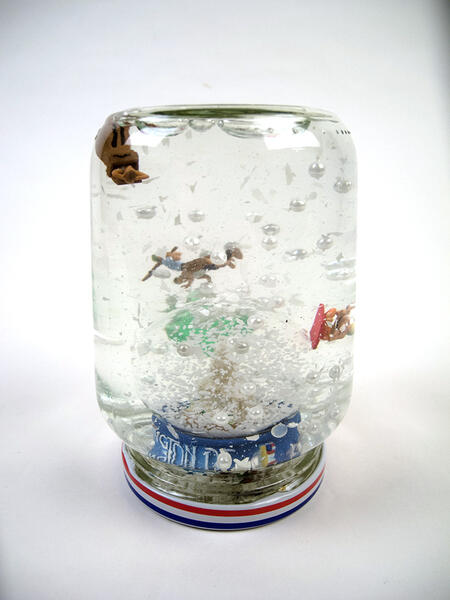 Snowglobe: homelessSnowglobe: Homeless 2014 (fts Futility) Made from an empty mustard jar, this functional snowglobe contains water, glycerin, plastic pearls and glitter, a plastic model of the US Capitol, and plastic figurines of suspended homeless people. 4" x 3" x 3" 2015
Snowglobe: homelessSnowglobe: Homeless 2014 (fts Futility) Made from an empty mustard jar, this functional snowglobe contains water, glycerin, plastic pearls and glitter, a plastic model of the US Capitol, and plastic figurines of suspended homeless people. 4" x 3" x 3" 2015 -
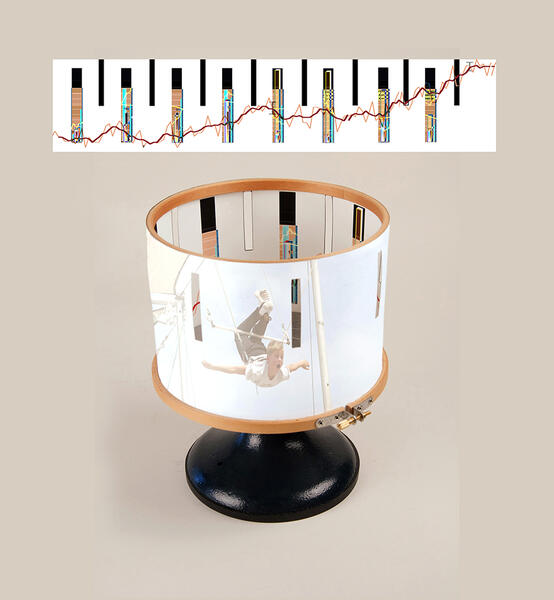 Climate Change: zoetropeMedia/Process: wood, potter’s wheel, digital print: a functional zoetrope that displays statistics on climate change. The upper graphic is the visual information displayed inside the zoetrope. 9 x5 x5 (wood, metal, digital print) 2014
Climate Change: zoetropeMedia/Process: wood, potter’s wheel, digital print: a functional zoetrope that displays statistics on climate change. The upper graphic is the visual information displayed inside the zoetrope. 9 x5 x5 (wood, metal, digital print) 2014 -
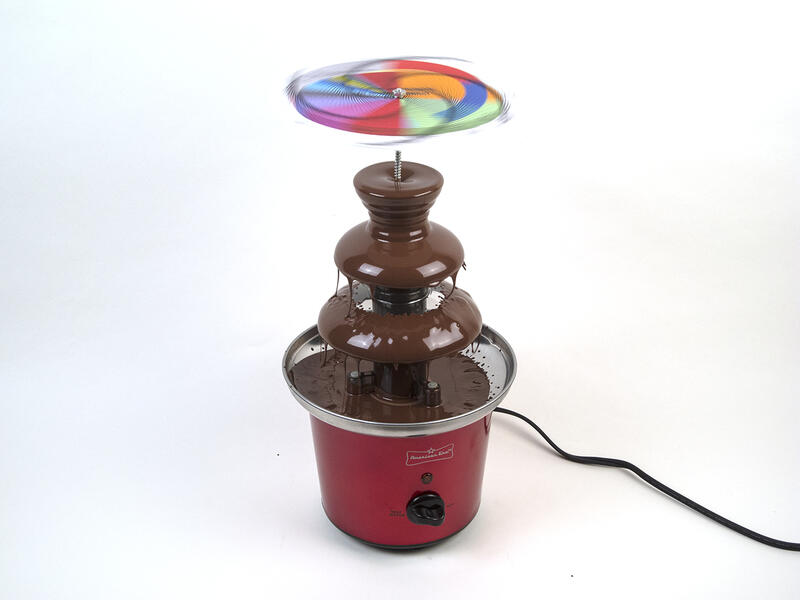 Praxiscope: Agricultural Practices.jpgThis functional chocolate fondue fountain is topped with a spinning image that juxtaposes data on cash vs. sustenance farming practices. From the series Futility, which uses historical and contemporary photo techniques to examine socioeconomic issues. 16”x7”x7” Praxiscope (electric fondue appliance, choclate, digital print) 2014
Praxiscope: Agricultural Practices.jpgThis functional chocolate fondue fountain is topped with a spinning image that juxtaposes data on cash vs. sustenance farming practices. From the series Futility, which uses historical and contemporary photo techniques to examine socioeconomic issues. 16”x7”x7” Praxiscope (electric fondue appliance, choclate, digital print) 2014 -
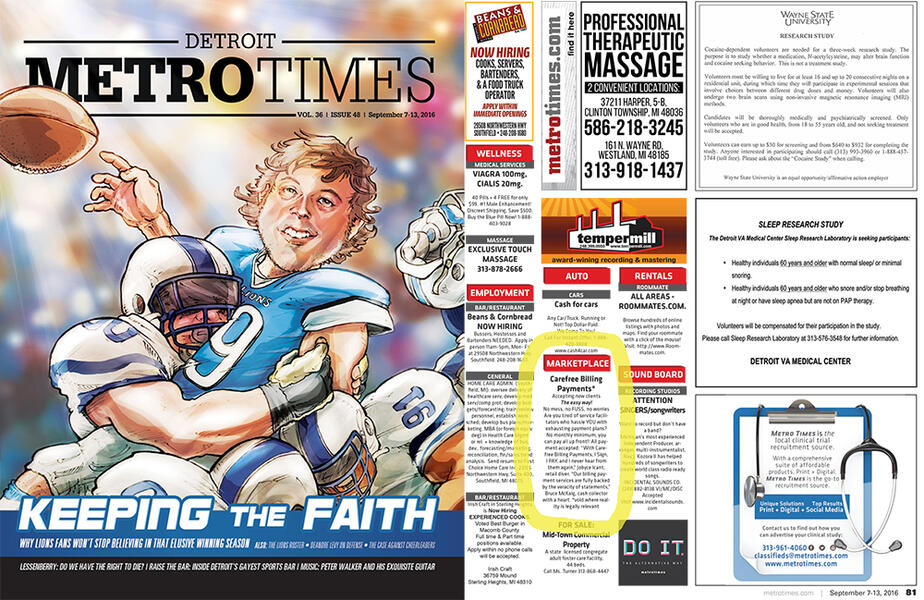 Carfree Billing Classified AdCarefree Billing Payments (fts Futility) This ad (circled in yellow) was placed in Detroit's MetroTimes. It offers to handle any and all debt problems, by accepting any payments users chose to send in. No further claims. 14”x10” Classified ad in Detroit Metro Weekly (ink on paper) Published in Issue 36 Vol. 48 September 7 2016
Carfree Billing Classified AdCarefree Billing Payments (fts Futility) This ad (circled in yellow) was placed in Detroit's MetroTimes. It offers to handle any and all debt problems, by accepting any payments users chose to send in. No further claims. 14”x10” Classified ad in Detroit Metro Weekly (ink on paper) Published in Issue 36 Vol. 48 September 7 2016 -
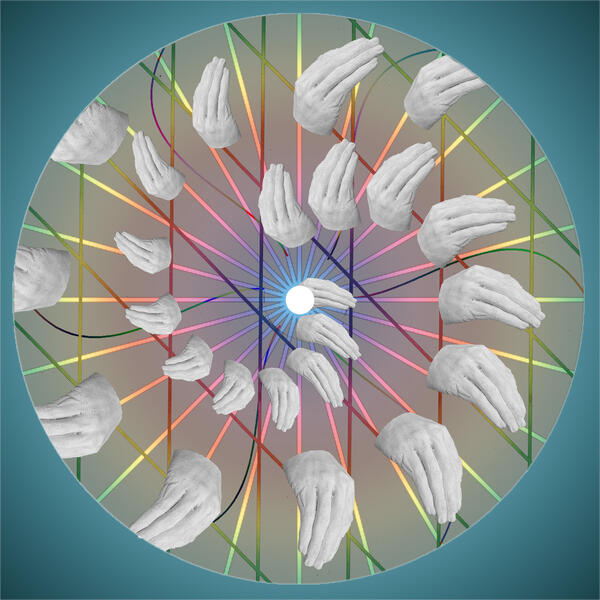 The Hand That Feeds YouThis functioning phenakistoscope uses swirling severed hands as metaphor for the ever out-of-reach means to make ends meet. It is based on the hand prints of individuals I never met but interacted with through installations on an abandoned campus while at the Equal Justice Residency at the Santa Fe Art Institute. 14" x 11" x 11" (wood, metal, digital print, electric motor) 2018
The Hand That Feeds YouThis functioning phenakistoscope uses swirling severed hands as metaphor for the ever out-of-reach means to make ends meet. It is based on the hand prints of individuals I never met but interacted with through installations on an abandoned campus while at the Equal Justice Residency at the Santa Fe Art Institute. 14" x 11" x 11" (wood, metal, digital print, electric motor) 2018
Public Art and Performance
I used a 2002 grant from the DC Commission on the Arts and Humanities to produce my first animation on DVD of a fictitious tour guide twirling and traveling through photographs that I made from different locales around the world. Since the project was publicly funded, I wanted to give the result back to the public. I produced 1000 DVDs of the work and gave them away for free to people on the streets in DC.
I learned a lot from the face-to-face time with people on the streets so I continued to produce works for projections or public performances. This choice coincided with more collaborations with other visual artists, audio artists, historians, and eventually I started participatory performance work where the "audience" plays an active role in semi-guided, semi-scripted experiences that blur distinctions between performer and viewer.
I learned a lot from the face-to-face time with people on the streets so I continued to produce works for projections or public performances. This choice coincided with more collaborations with other visual artists, audio artists, historians, and eventually I started participatory performance work where the "audience" plays an active role in semi-guided, semi-scripted experiences that blur distinctions between performer and viewer.
-
Projection: Bruce McKaig and Adrienne PenebreI was the lead artist and inaugural curator for the Cube@Canal Park, a permanently installed A/V delivery platform in the park. I worked with local residents to incorporate their stories, images, poems, into the projections. I also worked with local audio artist Adrienne Penebre for the sound track. Funded by the DC Commission on the Arts and Humanities, the DC Humanities Council, and the DC Department of Transportation 20-minute projection 2012.
-
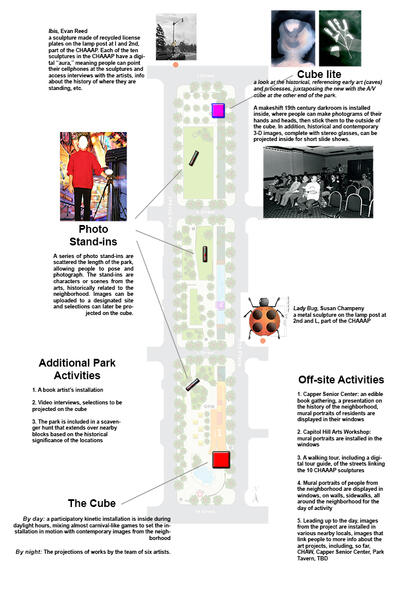 This Plave Has A Voice: Event DayI conceived and organized a free public Event Day (September 20 2014) that included more than two-dozen artists with performances, sculptures and installations, historical walking tours, and student docents from local universities. As well as working with artists and community, I was the liaison with project funders:The DC Commission on the Arts and Humanities, The DC Department of Transportation, and the DC Humanities Council. The project developed beyond the initial constraints because I united the disparate goals of the individual funders. Here is a link to the project website with full info: http://www.thisplacehasavoice.info participatory installations, tours, and performances (12 hours) 2014
This Plave Has A Voice: Event DayI conceived and organized a free public Event Day (September 20 2014) that included more than two-dozen artists with performances, sculptures and installations, historical walking tours, and student docents from local universities. As well as working with artists and community, I was the liaison with project funders:The DC Commission on the Arts and Humanities, The DC Department of Transportation, and the DC Humanities Council. The project developed beyond the initial constraints because I united the disparate goals of the individual funders. Here is a link to the project website with full info: http://www.thisplacehasavoice.info participatory installations, tours, and performances (12 hours) 2014 -
Feed Me Your MemoriesThis clip is an edit from a performance piece staged in a public park in Washington DC as part of the public art project This Place Has A Voice. It is a meditative micro-drama exploring the physical manifestation of sharing memories. Sitting at a park table under the Cube, I fed Performative Eater Jon Lee a cake decorated with edible pictures of my childhood, in silence, for 2.5 hours. performance collaborating with Jon Lee (2.5 hours)
-
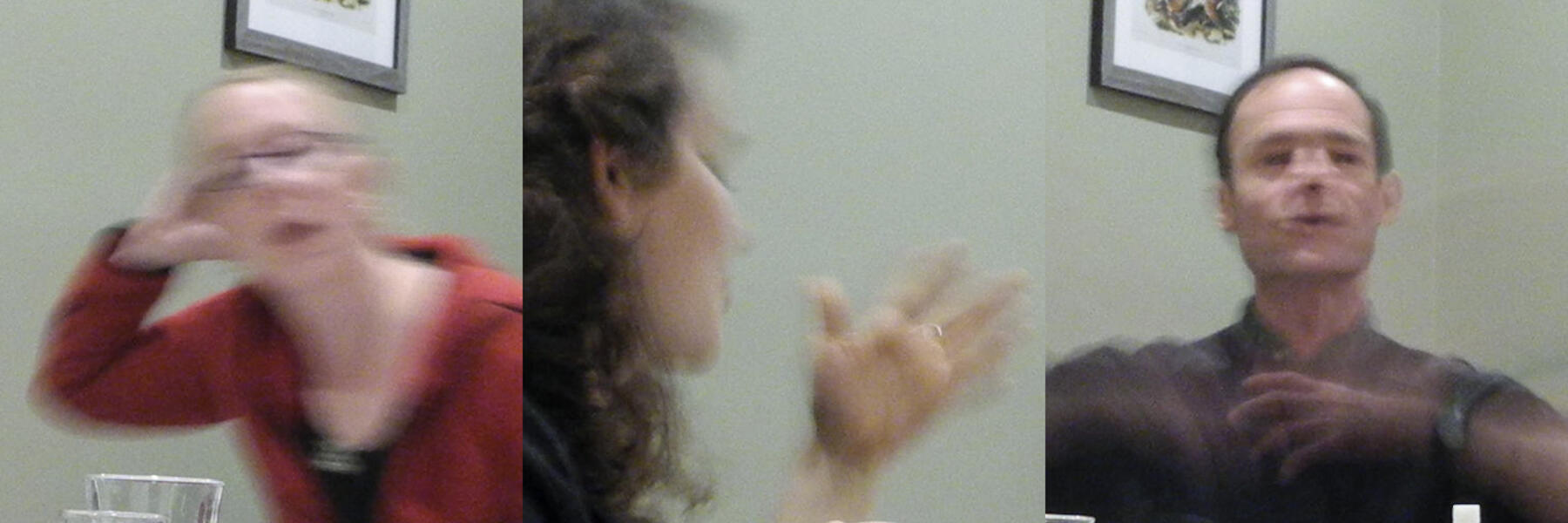 Narrative The Build WeNarrative the Build We This image is the publicity banner for a multimedia performance piece at The Source Theater Festival in Washington DC.The attending public guided the story through survey answers and group discussions throughout the performance. Washington Post writer Nelson Pressley attended and wrote: "The view is torqued most unusually in the artistic blind date, a gentle and even jaunty reminder of how we rush to fill in storytelling blanks. “Narrative the Build We” lasts only about 25 minutes; it’s created and thoughtfully performed by composer Ashi Day, visual artist Bruce McKaig and director Abby Zan. What’s up with the questions you have to answer on your way up to the rehearsal studio where this is staged? You’re not always sure. But as they puzzle together a puckish non-story (on deadline, naturally), you get the gist of how selective and even debatable our choices can be whenever we frame tales and reports." Here is a video sampling: https://vimeo.com/125078193 multimedia participatory performance (45 minutes, with Ashi Day and Abby Zan) 2015
Narrative The Build WeNarrative the Build We This image is the publicity banner for a multimedia performance piece at The Source Theater Festival in Washington DC.The attending public guided the story through survey answers and group discussions throughout the performance. Washington Post writer Nelson Pressley attended and wrote: "The view is torqued most unusually in the artistic blind date, a gentle and even jaunty reminder of how we rush to fill in storytelling blanks. “Narrative the Build We” lasts only about 25 minutes; it’s created and thoughtfully performed by composer Ashi Day, visual artist Bruce McKaig and director Abby Zan. What’s up with the questions you have to answer on your way up to the rehearsal studio where this is staged? You’re not always sure. But as they puzzle together a puckish non-story (on deadline, naturally), you get the gist of how selective and even debatable our choices can be whenever we frame tales and reports." Here is a video sampling: https://vimeo.com/125078193 multimedia participatory performance (45 minutes, with Ashi Day and Abby Zan) 2015 -
Making Meaning Workshop: Art Institute of ChicagoGiven 10 minutes to choreograph a performance on Making Meaning out of art experiences during a teachers’ workshop at the Art Institute of Chicago, my team of four brainstormed for 9.5 minutes, and then committed to repeating our conversation simultaneously in less than three minutes. When the microphone failed and we were asked to repeat the performance - three times - we insisted that the tech challenges only contributed to our statement about Making Meaning and stopped. video of live performance, collaboration with other teachers at the Art Institute of Chicago 3 minutes 2016
-
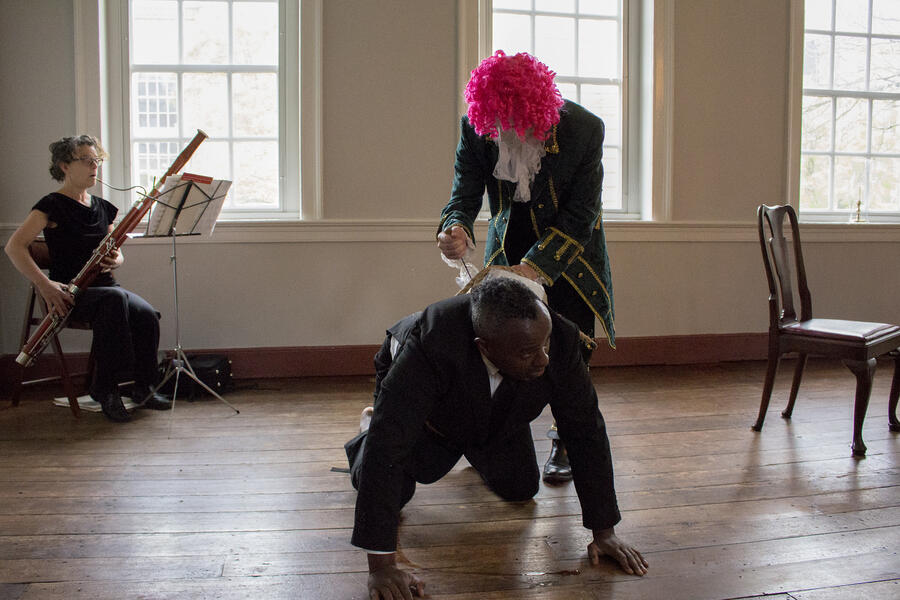 Performer in Sheldon Scott's The Finest AmenitiesIn The Finest Amenities, Sheldon Scott crawled with a block of ice strapped to his back through the streets of Alexandria VA and into an historic hotel/pub, "mocumenting" the elitist role of ice in colonial America. I'm in the red wig: a mute servant who chipped ice from his back and served quests glasses of punch to the sound of classical music. Many guests galdly accepted a glass. Others were offended by the disdain for human life and declined. still photograph of performance 2017
Performer in Sheldon Scott's The Finest AmenitiesIn The Finest Amenities, Sheldon Scott crawled with a block of ice strapped to his back through the streets of Alexandria VA and into an historic hotel/pub, "mocumenting" the elitist role of ice in colonial America. I'm in the red wig: a mute servant who chipped ice from his back and served quests glasses of punch to the sound of classical music. Many guests galdly accepted a glass. Others were offended by the disdain for human life and declined. still photograph of performance 2017 -
Camera Obscura, Georgetown UniversityThis clip includes an introduction to the camera obscura installation followed by a performance by singer/composer Ashi Day and other musicians visiting from the Kennedy Center. I led individuals and groups through participatory performances for the 72 hour installation. video of introduction and performance during a camera obscura installation in the library at Georgetown University 2019
-
Letter to Alex O: the MovieI used a grant from the DC Commission on the Arts and Humanities to produce my first time-based work, an animation on DVD of a fictitious tour guide twirling and sliding to different places on the planet represented by photographs I made during my travels. I produced 1000 DVDs of the work and gave them away for free to people on the streets in DC. Handing the DVDs out on the streets was an intense learning experience. Most people ignored me, pretended not to see or hear me. On one corner, I was competed for attention with someone dressed in a chicken suit handing out pencils. It was an eye opening experience to stand with no wall between me Artist and a viewer Person. animation on DVD 1000 copies, handed out at 6 locations in DC over 6 days
-
 Brent Elementary School: Front DeskCommissioned and funded by The School Libraries Project (Washington DC), I produced two murals for permanent installation in the Brent Elementary School's library. The project's goal was to inspire reading through the art experience, so I incorporated elements from the reading curriculum as well as historical documents from the school's past. I interviewed the school librarian, custodian, and other personnel for input on the murals content. 34" x 90" digital print on Dibond 2005
Brent Elementary School: Front DeskCommissioned and funded by The School Libraries Project (Washington DC), I produced two murals for permanent installation in the Brent Elementary School's library. The project's goal was to inspire reading through the art experience, so I incorporated elements from the reading curriculum as well as historical documents from the school's past. I interviewed the school librarian, custodian, and other personnel for input on the murals content. 34" x 90" digital print on Dibond 2005 -
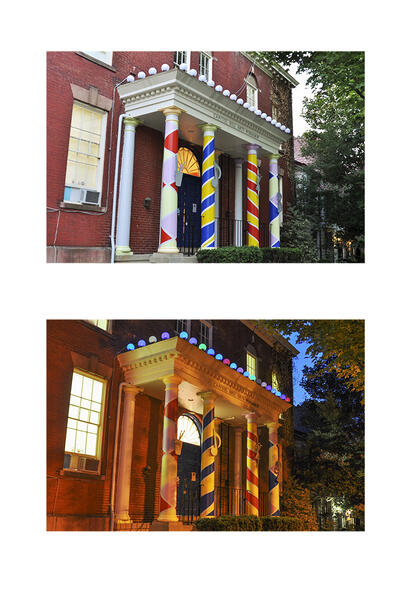 Community Center Portico: Washington DCI was contracted to conceive the design, recruit additional artists for the project, and execute the installation for this up-date to an art center in a residential neighborhood. I recruited two other arists to collaborate on a painting scheme, metal symbols of art, and solar powered lights. The solar powered lights undulate through a series of seven colors. I obtained the necessary permits with city planning agencies and raised an additional $7500 in addition to the initial budget of $10,000. 16' x 14' x 8' (paint, metal symbols, solar lights) 2004
Community Center Portico: Washington DCI was contracted to conceive the design, recruit additional artists for the project, and execute the installation for this up-date to an art center in a residential neighborhood. I recruited two other arists to collaborate on a painting scheme, metal symbols of art, and solar powered lights. The solar powered lights undulate through a series of seven colors. I obtained the necessary permits with city planning agencies and raised an additional $7500 in addition to the initial budget of $10,000. 16' x 14' x 8' (paint, metal symbols, solar lights) 2004
Time Based Works
My initial time based works were mute and built entirely from still photographs. After the privilege of working with sound artist Adrienne Penebre, I began to add video files and sound tracks. Some of the time-based works have been screened at the Phillips Collection, the Art Museum of the Americas, Gallery Project (Ann Arbor), the Hungarian Multicultural Center (Budapest), et al.
For a 2006 exhibition of works from Time Markers, Andy Grundberg wrote: McKaig is less interested in the science or economics of how we move through time than he is fascinated by visual representations that encompass human presence and its shadowy other, absence. Part of what animates his work is a sense of temporality that one might interpret in terms of mortality.
The economics of how "we move through time" came to play a larger role in my practice since these works.
For a 2006 exhibition of works from Time Markers, Andy Grundberg wrote: McKaig is less interested in the science or economics of how we move through time than he is fascinated by visual representations that encompass human presence and its shadowy other, absence. Part of what animates his work is a sense of temporality that one might interpret in terms of mortality.
The economics of how "we move through time" came to play a larger role in my practice since these works.
-
Time Markers: replacing a kitchen floorWorkers were photographed while they stripped then replaced a kitchen floor over 7 hours by cameras taped to the ceiling . The cameras produced a cumulative pinhole image and a series of timelapse stills. 3:00 minutes mute 2006
-
Time Markers: photo shop window, BudapestReflections of pedestrians are photographed in a photography store window producing a pinhole image and a timelapse series. This was part of my work while in Residence at The Hungarian Multicultural Canter in Budapest. 2:58 minutes mute 2008
-
Pastry Shop and a Rainy StreetI merged interior and exterior timelapse sequences to build this mute, aesthetic narrative about the passing of time. Work done while in residence at The Hungarian Multicultural Center, Budapest 3:06 minutes 2010
-
Time Markers: executive directorAndy Grundburg: "McKaig is less interested in the science or economics of how we move through time than he is fascinated by visual representations that encompass human presence and its shadowy other, absence. Part of what animates his work is a sense of temporality that one might interpret in terms of mortality.” Exhibited at The District of Columbia Arts Center 2006 3:27 minutes 2006
-
Time Markers: Cafe Europa, BudapestFellow resident artist ( Hungarian Multicultural Center) Rachelle taking a break. Exhibited at The National Portrit Gallery 2010 2:49 minutes mute
-
Time Markers: betta splendensThis is the only symbolic work in the series. Instead of workers on the job, this photographs fighting fish in their bubbles. 3:03 minutes mute
-
Becky on the BridgeA faceless pedestrian, footsteps, a bridge over the Danube. Work during a residency at The Hungarian Multicultural Center Budapest. 5:00 minutes with audio 2008
-
The Brick and the EggIn Paris 1994, I used a 8mm film camera to make this piece about missed encounters. When I had it transferred to a digital file, the media house had applied a soundtrack of their choice, which I left in and added some additional visual edits. The title comes from a Readers Theater performance that I did in high school. 2:46 minutes with audio 2007
-
TV Washes Two Much Of Me: Pilot PieceMy interest in photography and television started at the same time. Growing up, the family would watch The Wonderful World of Disney on Sundays, then eat popcorn and drink milkshakes while watching slides of family vacations. Forty years later, I never got my own TV, but have continued to explore the role images play in memory and truth. I started making these short works around, in front of, inside a TV, questioning boundaries between television as an external experience and television as part of identity. It was screened at The Phillips Collection in Washington DC in 2012. 3.5 minutes with audio 2011
Handcolored Gelatin Silver Photograms
Since 1987, I have been layering cutouts, leaves, rocks, body parts over pieces of paper as I print in the darkroom. These images use my archive of negatives as starting points for stories that turn any documentation into prose. It is a celebration of photography's capacity to invent over its capacity to document.
-
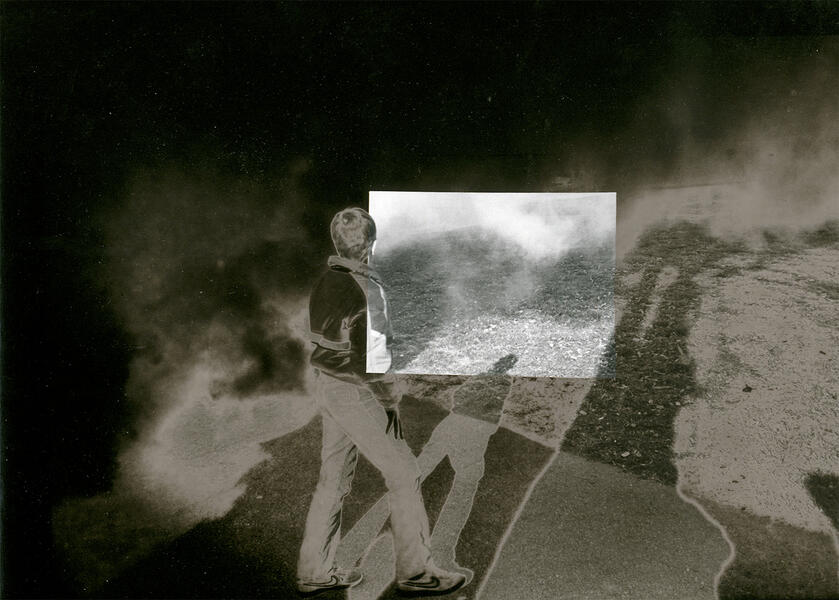 untitled (DW017)8"x10" one-of-a-kind gelatin silver print 1987
untitled (DW017)8"x10" one-of-a-kind gelatin silver print 1987 -
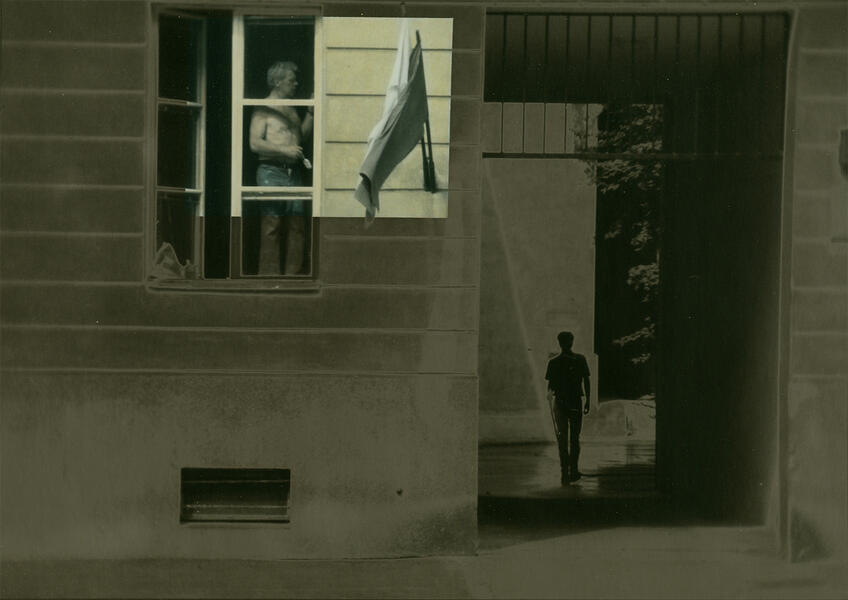 untitled (DW029)8"x10" one-of-a-kind gelatin silver print, color pencil 1987
untitled (DW029)8"x10" one-of-a-kind gelatin silver print, color pencil 1987 -
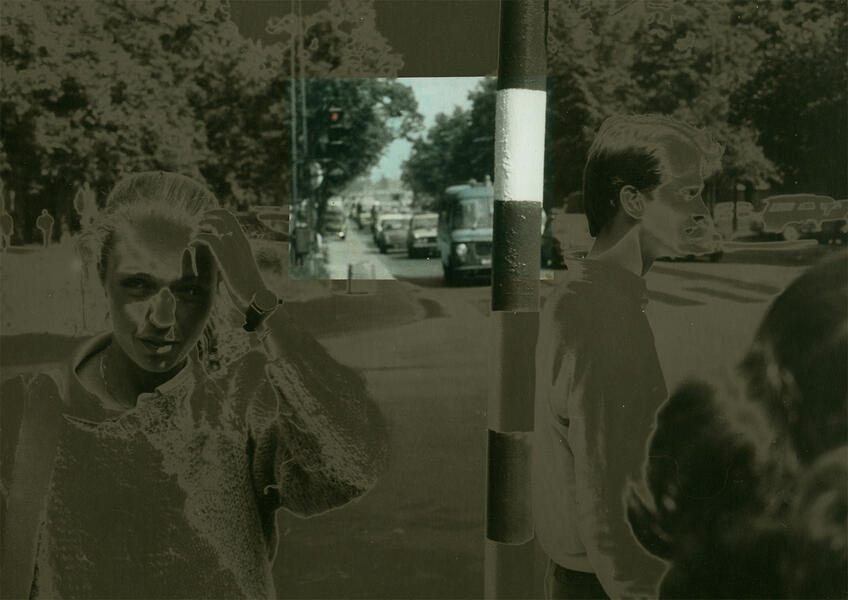 untitled (DW030)8"x10" one-of-a-kind gelatin silver print, color pencil 1987
untitled (DW030)8"x10" one-of-a-kind gelatin silver print, color pencil 1987 -
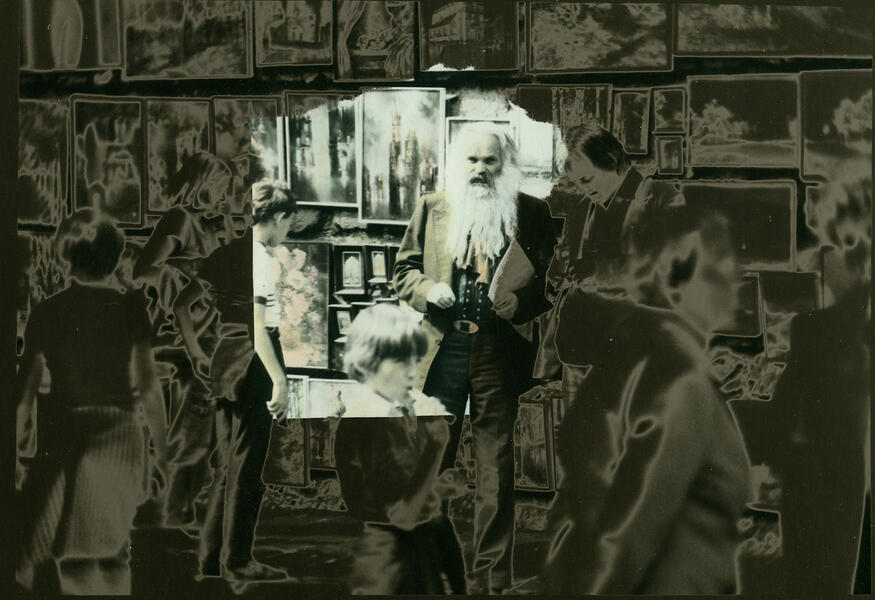 untitled (DW033)8"x10" one-of-a-kind gelatin silver print, color pencil 1987
untitled (DW033)8"x10" one-of-a-kind gelatin silver print, color pencil 1987 -
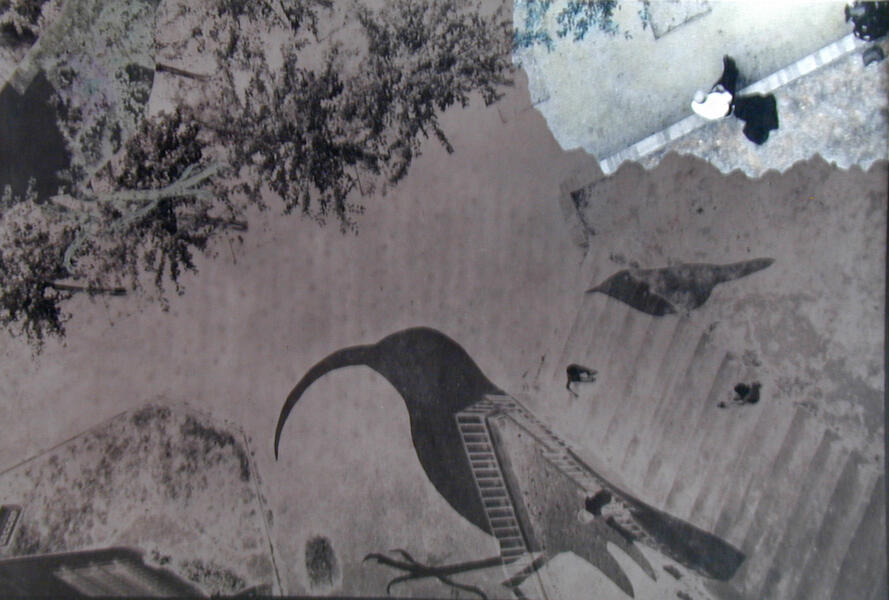 untitled (DW053)12"x16" one-of-a-kind gelatin silver print, oil paint 1989
untitled (DW053)12"x16" one-of-a-kind gelatin silver print, oil paint 1989 -
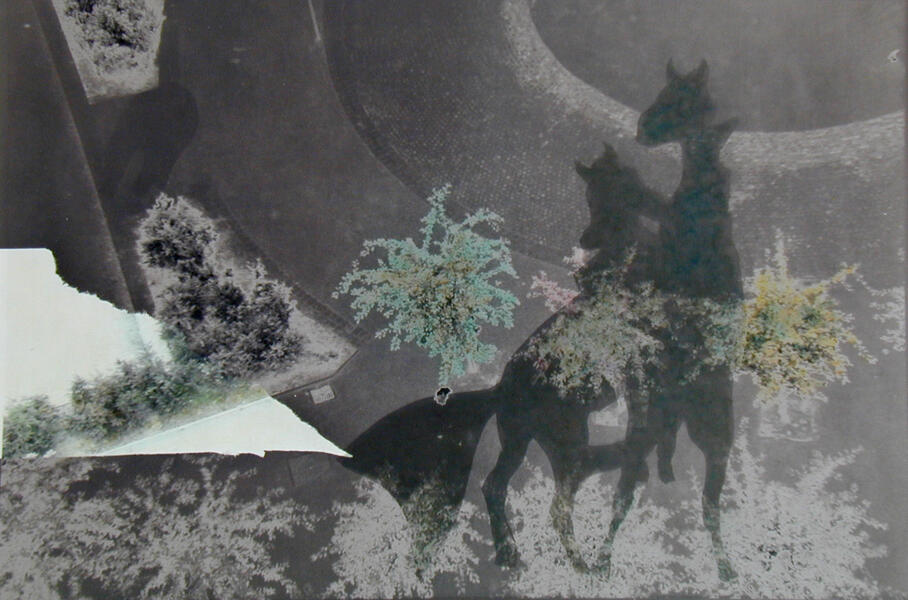 untitled (DW055)12"x16" one-of-a-kind gelatin silver print, oil paint 1989
untitled (DW055)12"x16" one-of-a-kind gelatin silver print, oil paint 1989 -
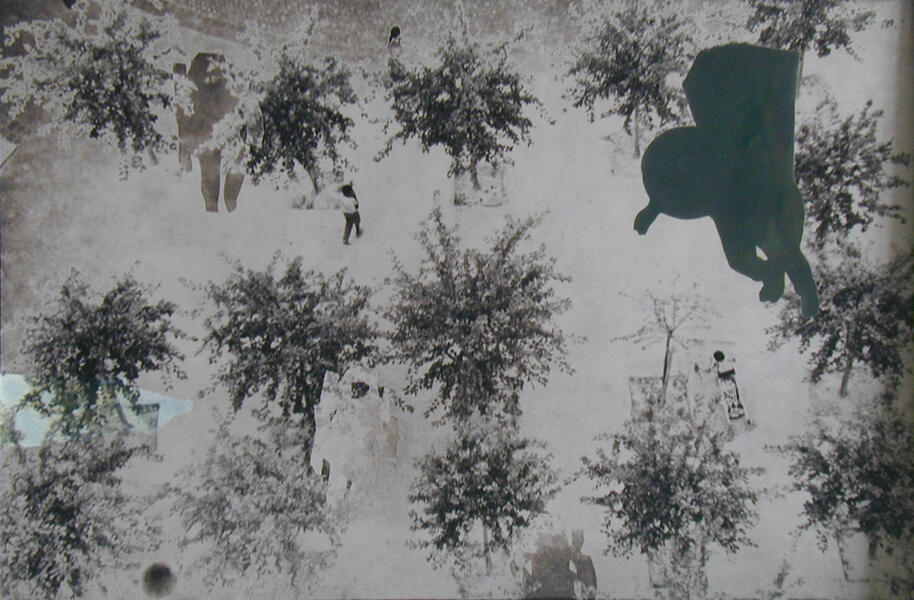 untitled (DW056)12"x16" one-of-a-kind gelatin silver print, oil paint 1989
untitled (DW056)12"x16" one-of-a-kind gelatin silver print, oil paint 1989 -
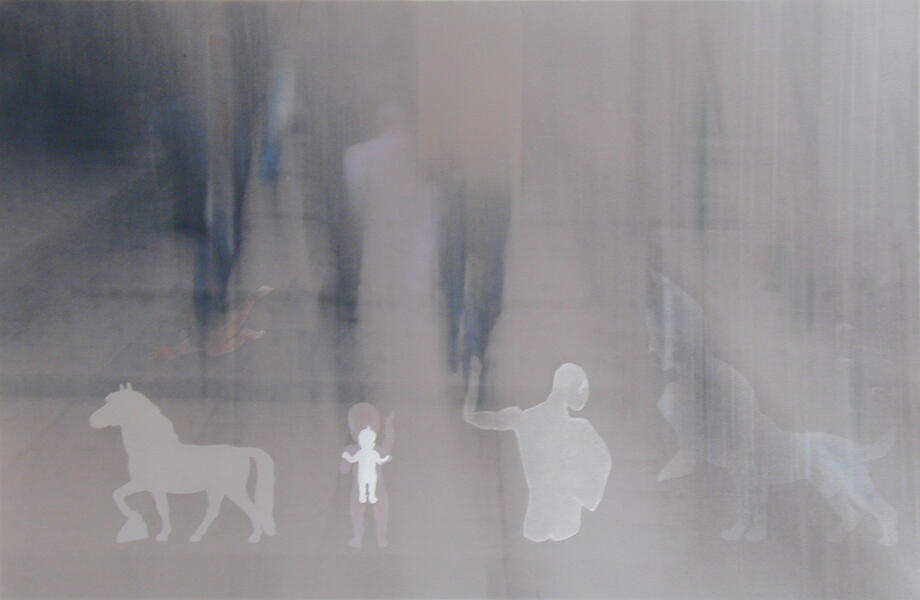 untitled (DW062)12"x16" one-of-a-kind gelatin silver print, color pencil 1989
untitled (DW062)12"x16" one-of-a-kind gelatin silver print, color pencil 1989 -
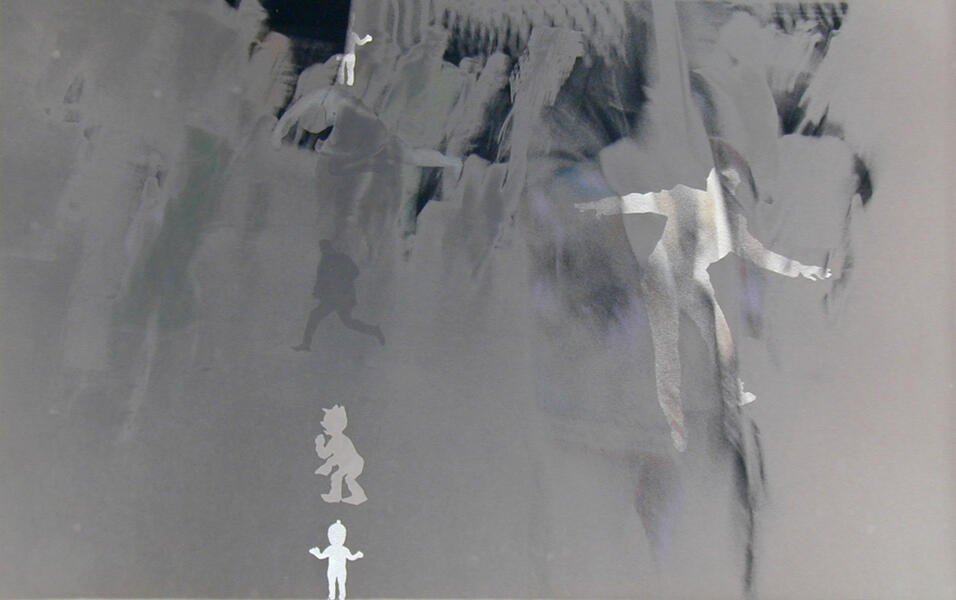 untitled (DW065)12"x16" one-of-a-kind gelatin silver print, color pencil 1989
untitled (DW065)12"x16" one-of-a-kind gelatin silver print, color pencil 1989 -
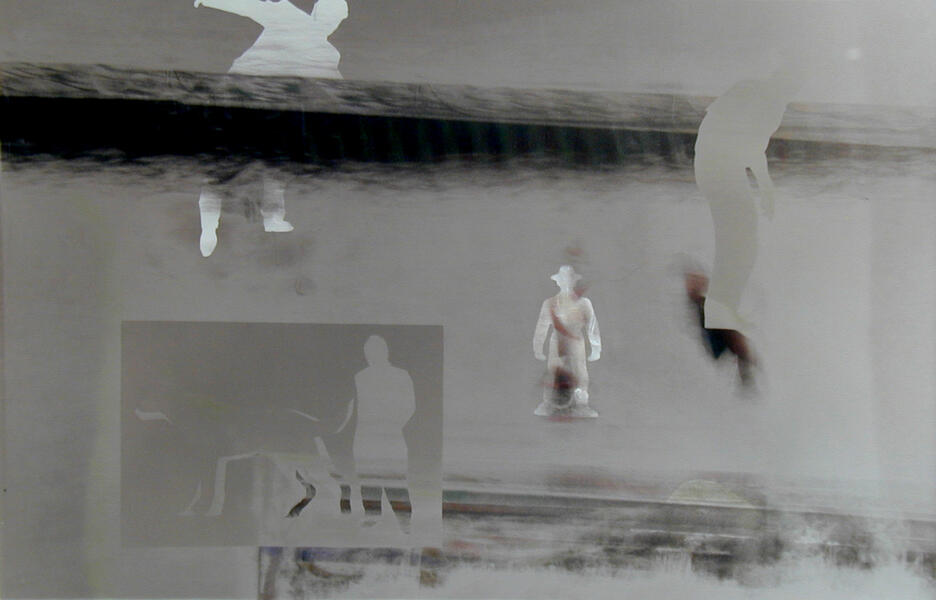 untitled (DW070)12"x16" one-of-a-kind gelatin silver print, color pencil 1989
untitled (DW070)12"x16" one-of-a-kind gelatin silver print, color pencil 1989
Gelatin Silver Prints in Ambient Light
Gelatin silver prints in ambient light are produced with the inherently chaotic nature of light, a brut and rudimentary exploration of picture-less photography embracing, not avoiding, elements of chance and surprise. The images involve no optics, no camera, no darkroom, working only with the primary elements of photography: silver gelatin paper, chemicals, light. The paper is exposed, over hours or days, directly to ambient indoor/outdoor light and chemistry is applied by pouring, dripping, patting, splattering, splashing, brushing. Materials and gestures that are distinct and sequential in conventional photography here confront each other all at once and over and over. Treated this way, the silver develops not in black and white but in a multitude of colors. The resulting image is the very object exposed to light, without intermediary, like Daguerreotypes and other photographic processes that engender neither negative nor copy. The one-of-a-kind results are a mixture of my control and the force of natural elements: part prediction and part discovery. It is material photography, as in materialism, the doctrine that the only or fundamental reality is physical matter and that all beings, processes, and phenomena are manifestations of matter.
Images from this series have been exhibited at Galerie Lambert (Paris), the Kathleen Ewing Gallery (DC), School 33 Art Center (Baltimore), et al. The Bibliotheque Nationale (Paris) purchased eight Ambient Light images between 1992 and 1996.
1988 - present
Images from this series have been exhibited at Galerie Lambert (Paris), the Kathleen Ewing Gallery (DC), School 33 Art Center (Baltimore), et al. The Bibliotheque Nationale (Paris) purchased eight Ambient Light images between 1992 and 1996.
1988 - present
-
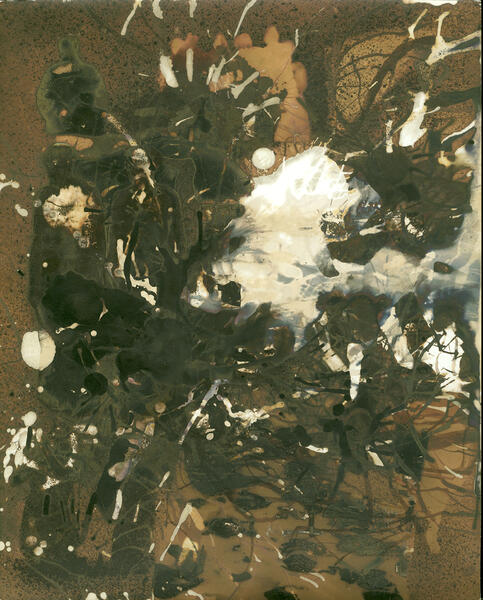 untitled (AL227)10"x 8" one-of-a-kind gelatin silver print 1990
untitled (AL227)10"x 8" one-of-a-kind gelatin silver print 1990 -
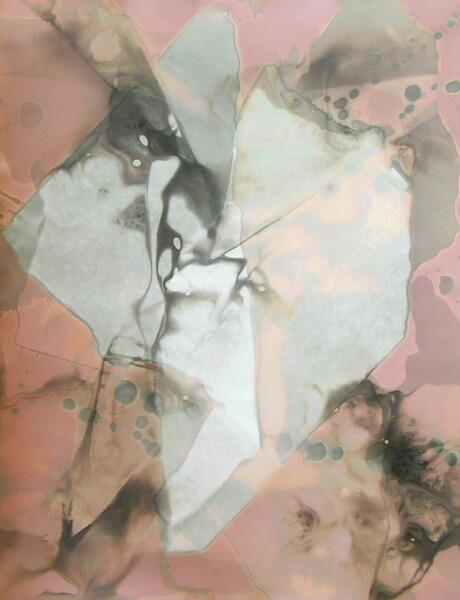 untitled (AL045)20"x16" one-of-a-kind gelatin silver print 1995
untitled (AL045)20"x16" one-of-a-kind gelatin silver print 1995 -
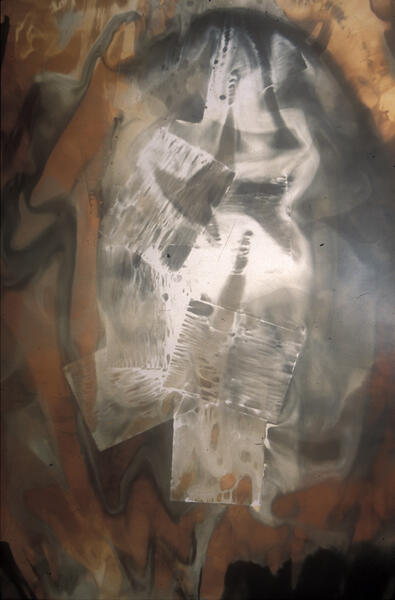 untitled (AL344)60"x41" one-of-a-kind gelatin silver print 1999
untitled (AL344)60"x41" one-of-a-kind gelatin silver print 1999 -
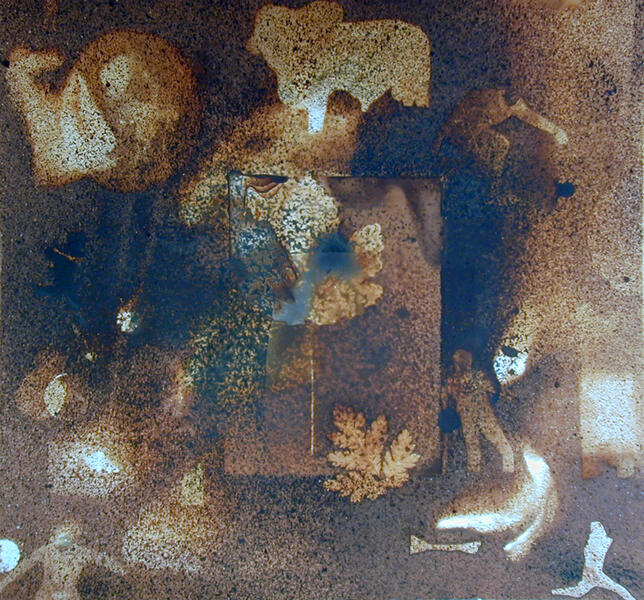 untitled (AL185)16"x16" one-of-a-kind gelatin silver print 1993
untitled (AL185)16"x16" one-of-a-kind gelatin silver print 1993 -
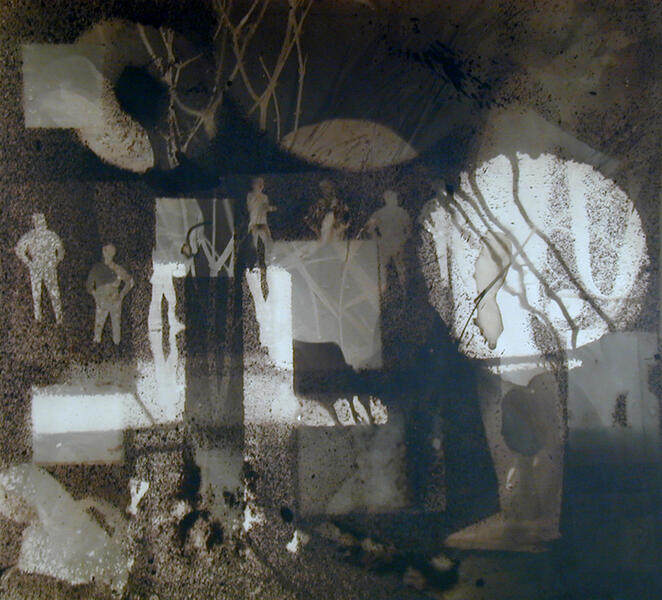 untitled (AL184)16"x16" one-of-a-kind gelatin silver print 1993
untitled (AL184)16"x16" one-of-a-kind gelatin silver print 1993 -
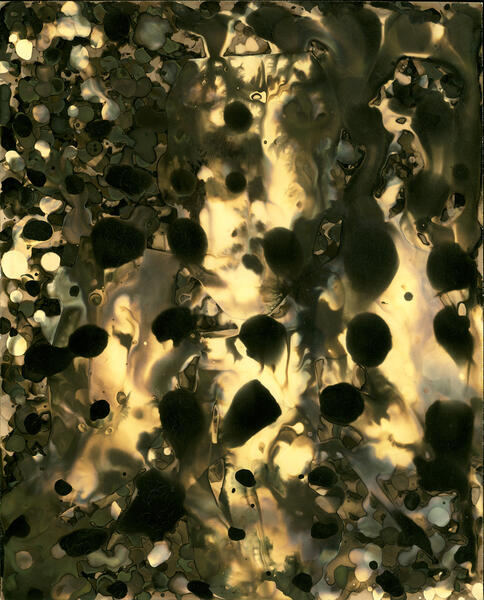 untitled (AL323)10"x8" one-of-a-kind gelatin silver print 1995
untitled (AL323)10"x8" one-of-a-kind gelatin silver print 1995 -
 untitled (AL341)10"x8" one-of-a-kind gelatin silver print 1995
untitled (AL341)10"x8" one-of-a-kind gelatin silver print 1995 -
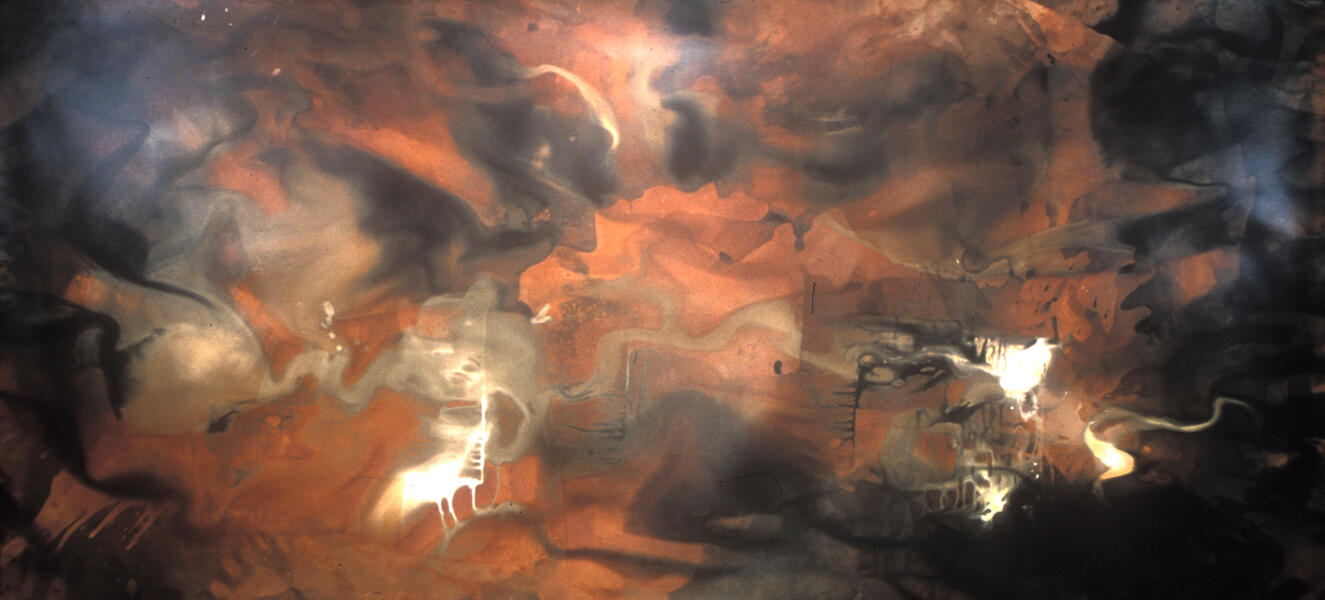 untitled (AL343)40"x96" one-of-a-kind gelatin silver print 1999
untitled (AL343)40"x96" one-of-a-kind gelatin silver print 1999 -
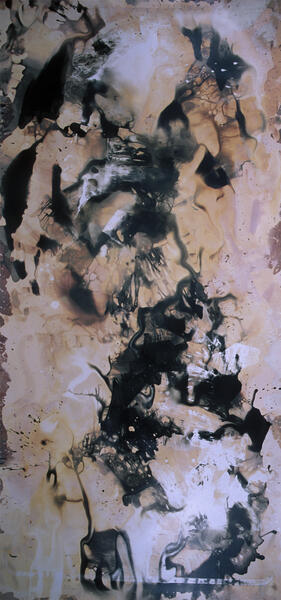 untitled (AL344)96" x 40" one-of-a-kind gelatin silver print 1999
untitled (AL344)96" x 40" one-of-a-kind gelatin silver print 1999 -
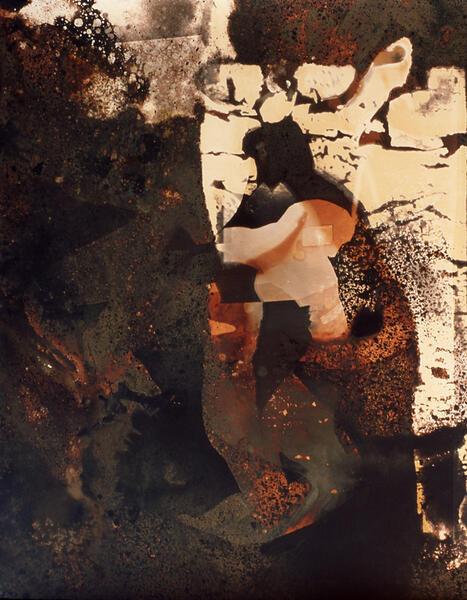 untitled_ambient light print10"x8" one-of-a-kind gelatin silver print 1994
untitled_ambient light print10"x8" one-of-a-kind gelatin silver print 1994
Latin America Works
In January 1988, I left Washington DC to spend six months in Mexico. Instead, I traveled through Mexico and arrived in Guatemala where I lived for two years, traveling at times as far south as Ecuador. In 1991, I returned to Guatemala for two more years. I lived in a small Tzutuhil village, San Pedro La Laguna, in the mountains to the west of Guatemala by Lake Atitlan. Over these formative years, I worked extensively with hand coloring and began making pinhole and stereo photographs. The first stereo photographs were made by bolting two cameras together. The first pinhole photographs were made from powdered milk cans.
Since 1988, I have been printing the Latin American negatives and coloring the photographs with watercolor or pencil. As of 2008, I have accumulated over three hundred one-of-a-kind photographs. There are more negatives to be printed. Parts of this series are in the collections of the Bibliotheque Nationale in Paris, El Centro Nationale Para la Proteccion de la Antigua in Guatemala, and La Maison Europeene de la Photographie in Paris. Parts have been exhibited at El Convento de Santa Clara, Anitqua Guatemala, Georgetown University, Martin Luther King Jr. Library, Le Faste Fou (Paris), Palais de Tokyo Museum (Paris).
Since 1988, I have been printing the Latin American negatives and coloring the photographs with watercolor or pencil. As of 2008, I have accumulated over three hundred one-of-a-kind photographs. There are more negatives to be printed. Parts of this series are in the collections of the Bibliotheque Nationale in Paris, El Centro Nationale Para la Proteccion de la Antigua in Guatemala, and La Maison Europeene de la Photographie in Paris. Parts have been exhibited at El Convento de Santa Clara, Anitqua Guatemala, Georgetown University, Martin Luther King Jr. Library, Le Faste Fou (Paris), Palais de Tokyo Museum (Paris).
-
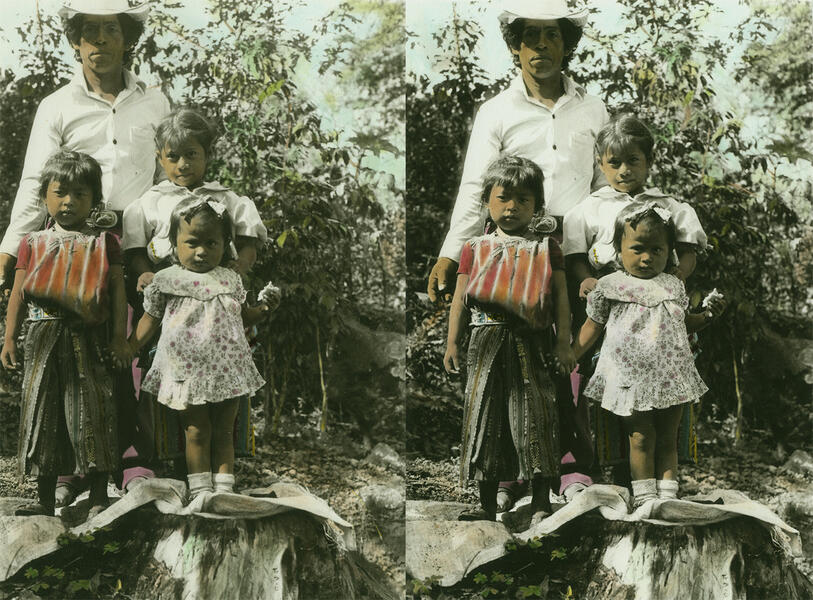 Antonio and daughters_3D6" x 8" gelatin silver stereo photographs, watercolors 1993
Antonio and daughters_3D6" x 8" gelatin silver stereo photographs, watercolors 1993 -
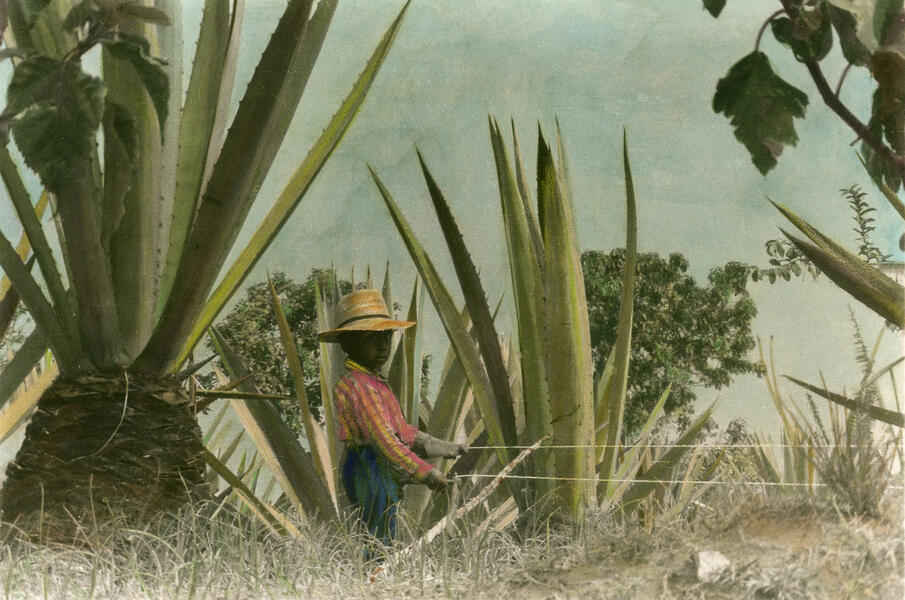 Making String6" x 9' gelatin silver gelatin silver print, watercolors, color pencil 1994
Making String6" x 9' gelatin silver gelatin silver print, watercolors, color pencil 1994 -
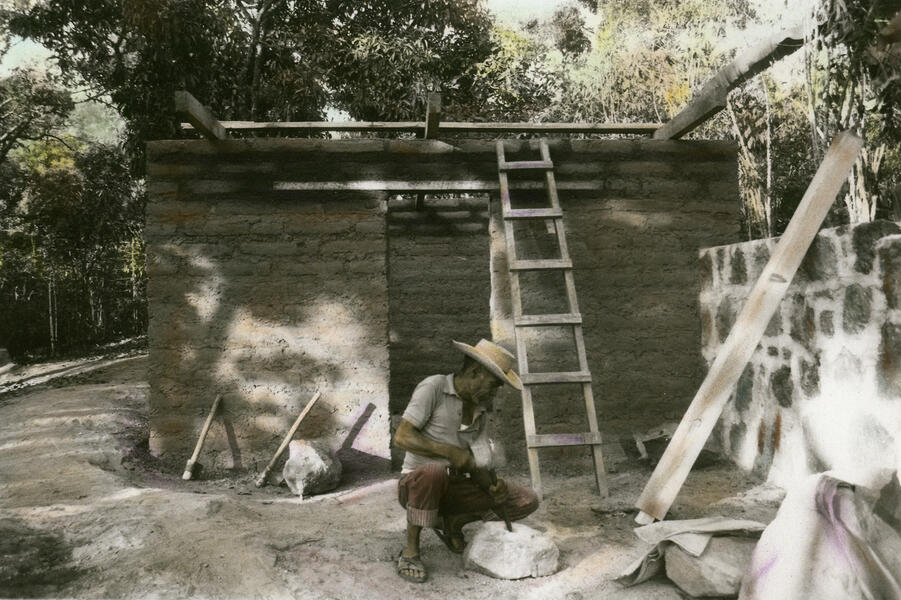 Jose building a house6" x 9" gelatin silver gelatin silver print, watercolors, color pencil 1995
Jose building a house6" x 9" gelatin silver gelatin silver print, watercolors, color pencil 1995 -
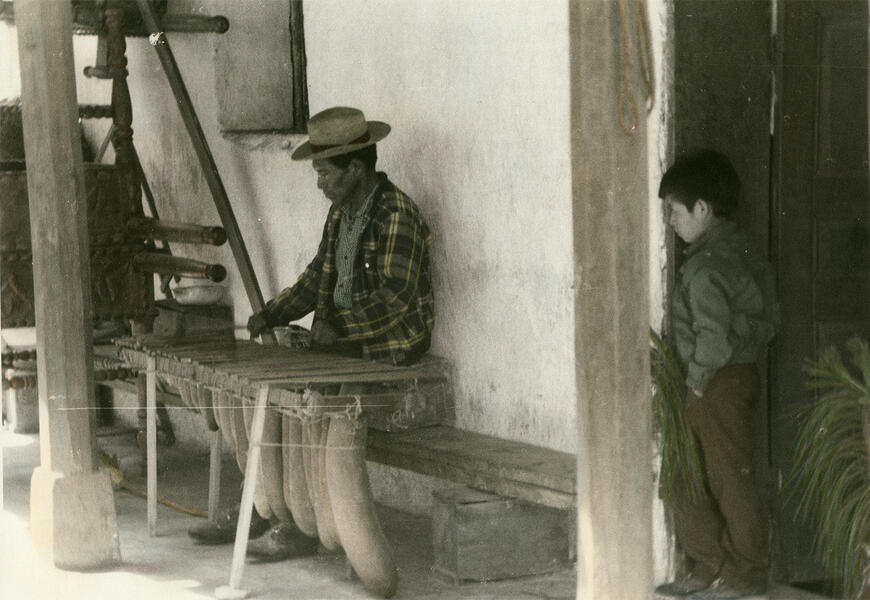 Marimba player6" x 9" gelatin silver gelatin silver print, watercolors, color pencil 1995
Marimba player6" x 9" gelatin silver gelatin silver print, watercolors, color pencil 1995 -
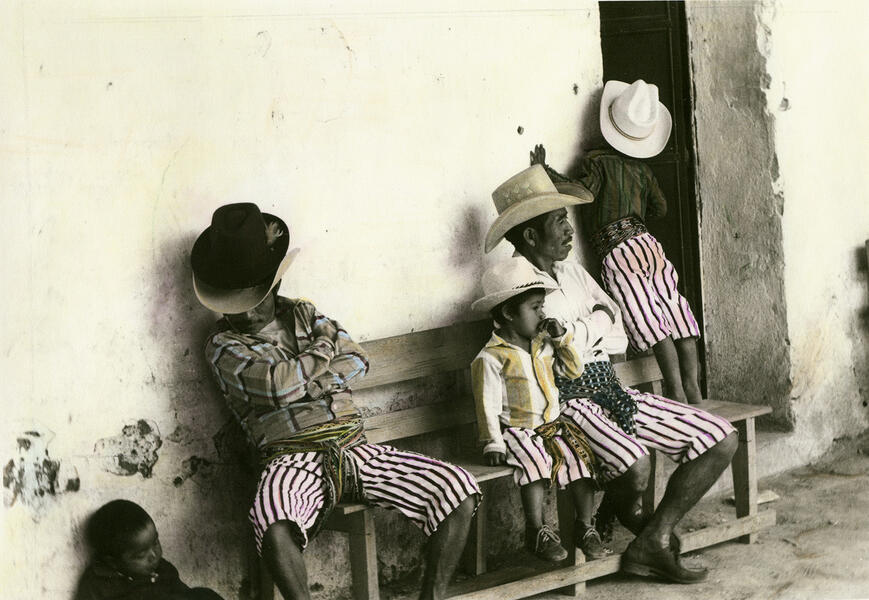 Fiest Santiago6" x 9" gelatin silver gelatin silver print, watercolors, color pencil 1994
Fiest Santiago6" x 9" gelatin silver gelatin silver print, watercolors, color pencil 1994 -
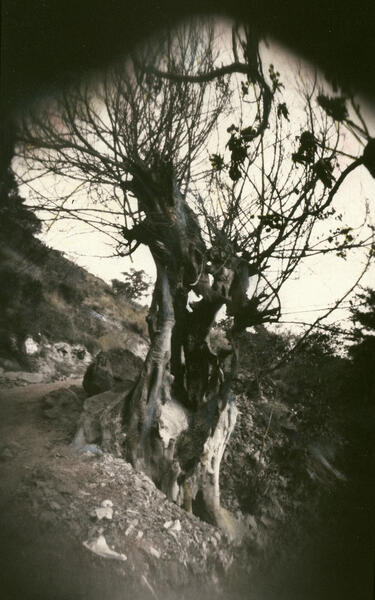 Tree (pinhole photograph)4" x 9" gelatin silver pinhole photograph, color pencil 1993
Tree (pinhole photograph)4" x 9" gelatin silver pinhole photograph, color pencil 1993 -
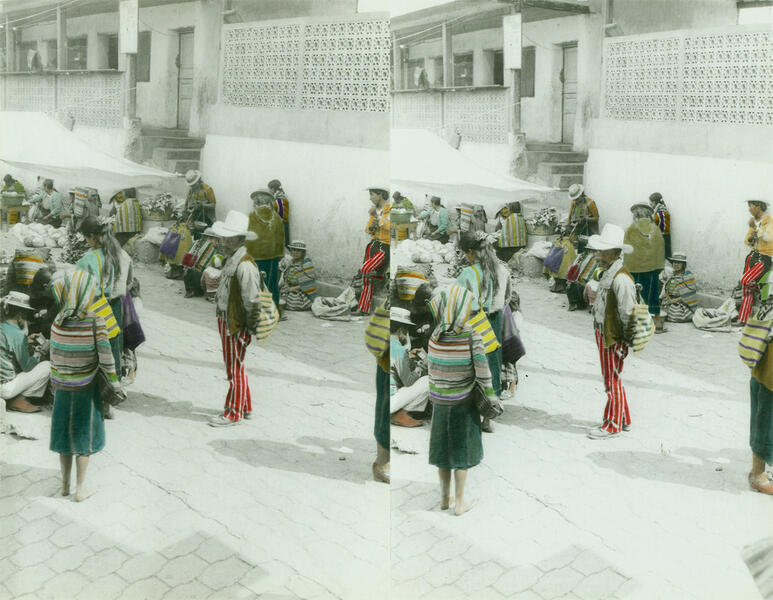 Market Todos Santos Gualtemala6" x 8" gelatin silver gelatin stereo photographs, watercolors 1998
Market Todos Santos Gualtemala6" x 8" gelatin silver gelatin stereo photographs, watercolors 1998 -
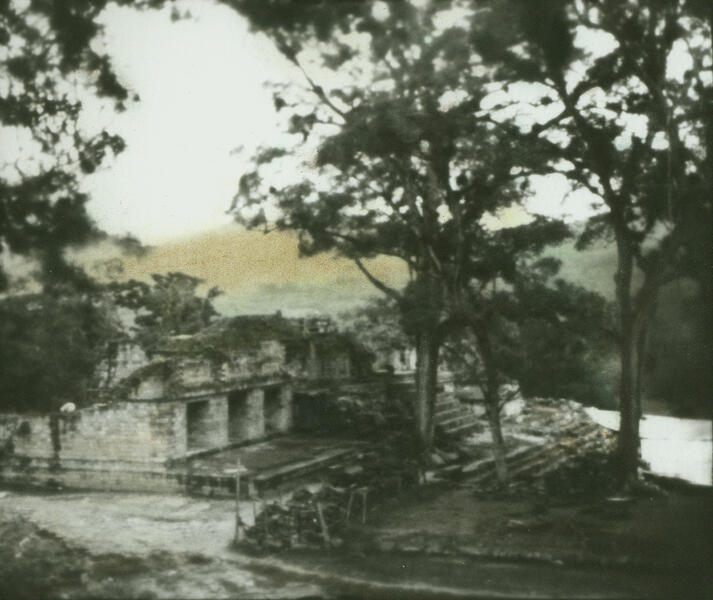 Mayan ruins014" x 5" gelatin silver gelatin silver pinhole photograph, color pencil 1996
Mayan ruins014" x 5" gelatin silver gelatin silver pinhole photograph, color pencil 1996 -
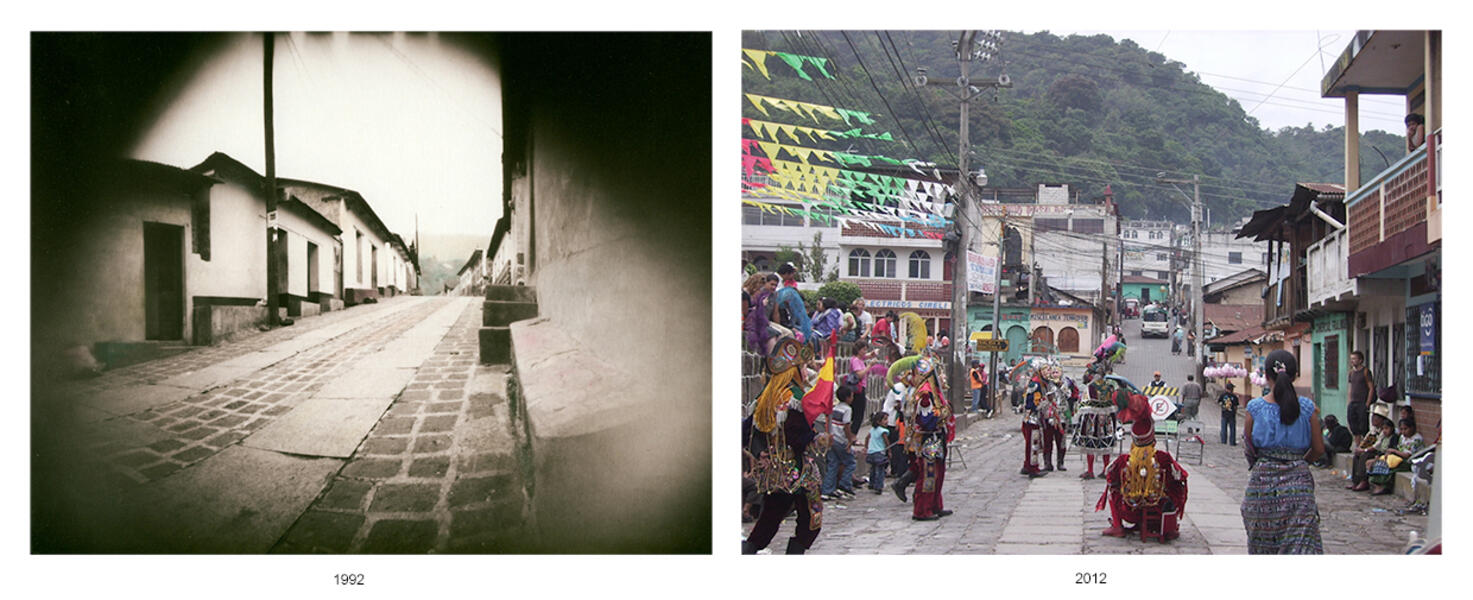 Then and Now: San Pedro La Laguna GuatemalaI made this pinhole photograph in San Pedro La Laguna Guatemala in 1990, then paired it with an image from 2013 of the same street that I found on the Internet. digital print, diverse sizes
Then and Now: San Pedro La Laguna GuatemalaI made this pinhole photograph in San Pedro La Laguna Guatemala in 1990, then paired it with an image from 2013 of the same street that I found on the Internet. digital print, diverse sizes -
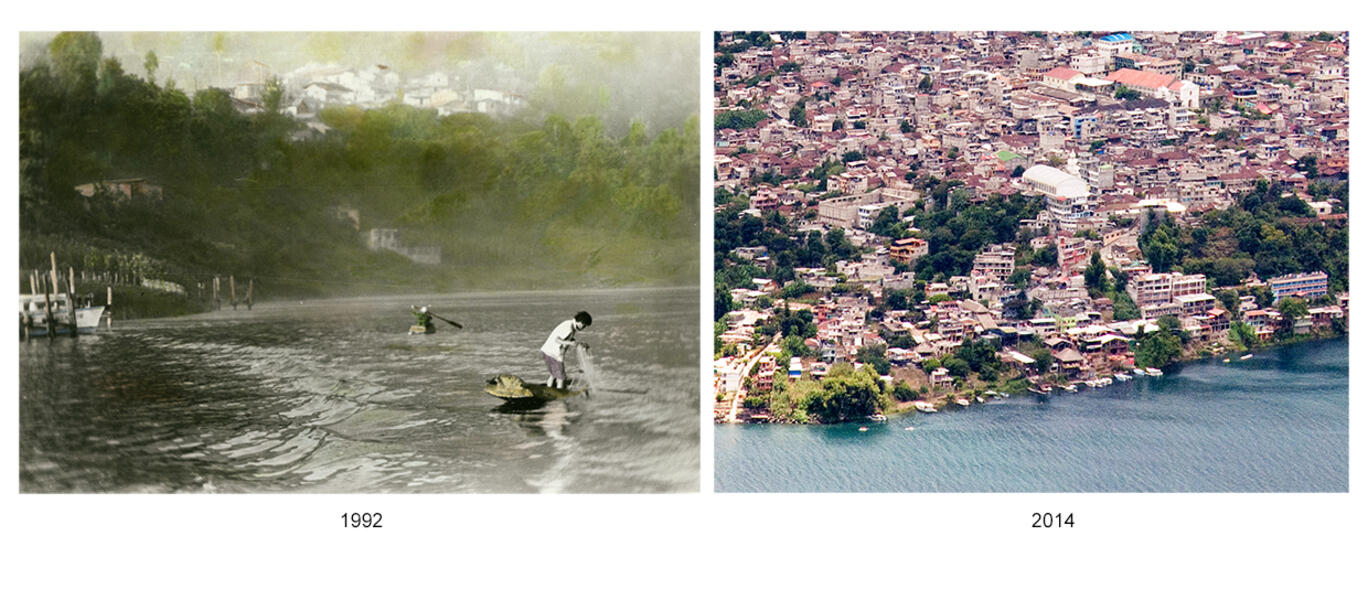 Then and Now: San Pedro dockI made this photograph in San Pedro La Laguna Guatemala in 1990, then paired it with an image from 2013 of the same scene found on the Internet. My goal is to return to San Pedro at some point to produce a series of images of the rapid growth over the last generation, and a study of how the new economics have affected the village. digital print, diverse sizes
Then and Now: San Pedro dockI made this photograph in San Pedro La Laguna Guatemala in 1990, then paired it with an image from 2013 of the same scene found on the Internet. My goal is to return to San Pedro at some point to produce a series of images of the rapid growth over the last generation, and a study of how the new economics have affected the village. digital print, diverse sizes
Trashcan Pinhole Photographs
In February 2001, I made a pinhole camera out of a 10-gallon galvanized steel trashcan. The slow exposures explain the absence of movement and activity in many scenes. The trashcan camera produces 16"x20" paper negatives that are contact printed for the final 20”x24” silver gelatin prints. The first two years of work produced cityscapes of Washington DC. Eventually, I began transporting the trashcan camera to the countryside in nearby Virginia and Maryland. Some of the resulting landscapes are panoramic, many are up-close compositions approached like still lifes.
I also used the trashcan camera to photograph perception drawings from psychology studies about vision and perception. Materials taken from science and the arts are scanned onto transparencies that are photographed with the pinhole trashcan. In psychology, the drawings and their questions are ostensibly presented in a “visually neutral” format, inviting viewers to form conclusions about how we see. In these pinhole photographs, the blatant visual qualities – vignetting, distortion -- render any insights transparent, dysfunctional, humorous, raising more questions than answers. That work made me curious about process in a vast sense so I expanded the subject matter to consider, from beginning to end, how a photograph is materially made (creation), seen (perception), and understood (cognition). Sample subjects include medical scans of the eye, sheet music, cave drawings, Renaissance paintings, cookie cutters, dials, graphs and data sheets from Kodak how-to books, a Chipotle napkin.
I also used the trashcan camera to photograph perception drawings from psychology studies about vision and perception. Materials taken from science and the arts are scanned onto transparencies that are photographed with the pinhole trashcan. In psychology, the drawings and their questions are ostensibly presented in a “visually neutral” format, inviting viewers to form conclusions about how we see. In these pinhole photographs, the blatant visual qualities – vignetting, distortion -- render any insights transparent, dysfunctional, humorous, raising more questions than answers. That work made me curious about process in a vast sense so I expanded the subject matter to consider, from beginning to end, how a photograph is materially made (creation), seen (perception), and understood (cognition). Sample subjects include medical scans of the eye, sheet music, cave drawings, Renaissance paintings, cookie cutters, dials, graphs and data sheets from Kodak how-to books, a Chipotle napkin.
-
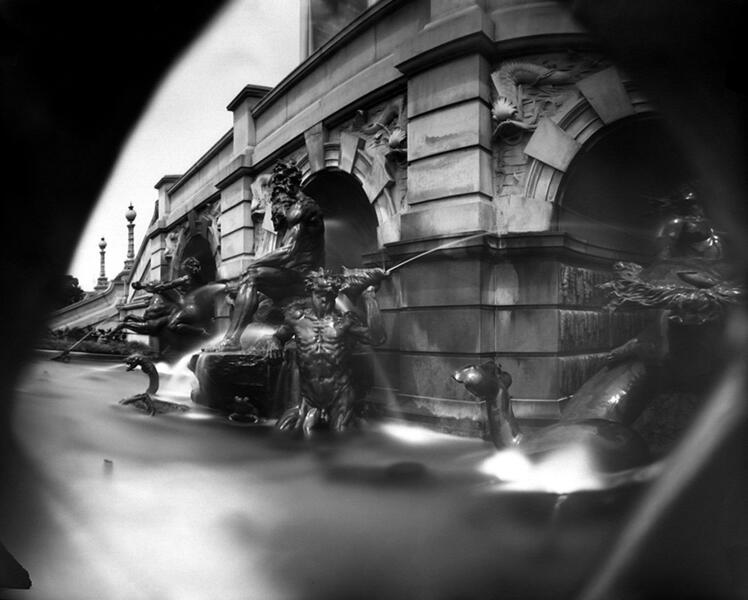 untitled (TC032 September 3 2001)Fountains in front of the Library of Congress USA 14 minute exposure 16"x20" gelatin silver print 2002
untitled (TC032 September 3 2001)Fountains in front of the Library of Congress USA 14 minute exposure 16"x20" gelatin silver print 2002 -
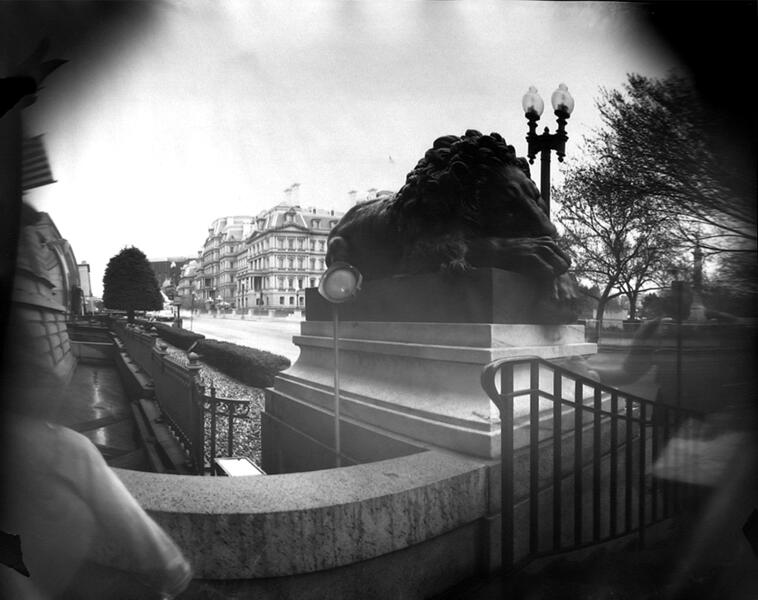 untitled (TC062 March 18 2002)Main entrance to the Corcoran Gallery of Art 16 minute exposure 16"x20" gelatin silver print 2002
untitled (TC062 March 18 2002)Main entrance to the Corcoran Gallery of Art 16 minute exposure 16"x20" gelatin silver print 2002 -
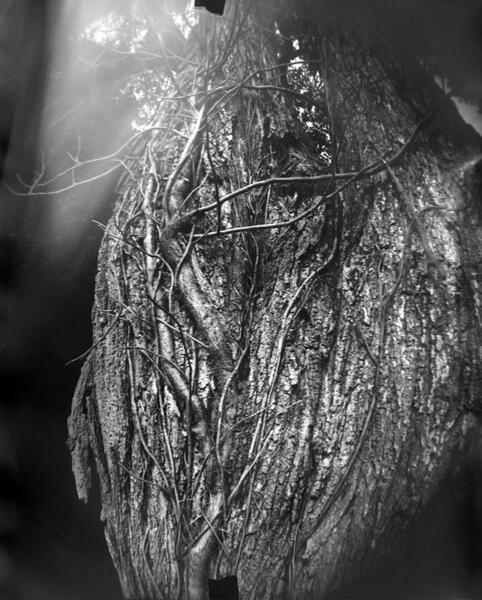 untitled (TC111 August 2003)50 minute exposure tree trunk, Garfield Park, Washington DC 2004 16"x20" gelatin silver print
untitled (TC111 August 2003)50 minute exposure tree trunk, Garfield Park, Washington DC 2004 16"x20" gelatin silver print -
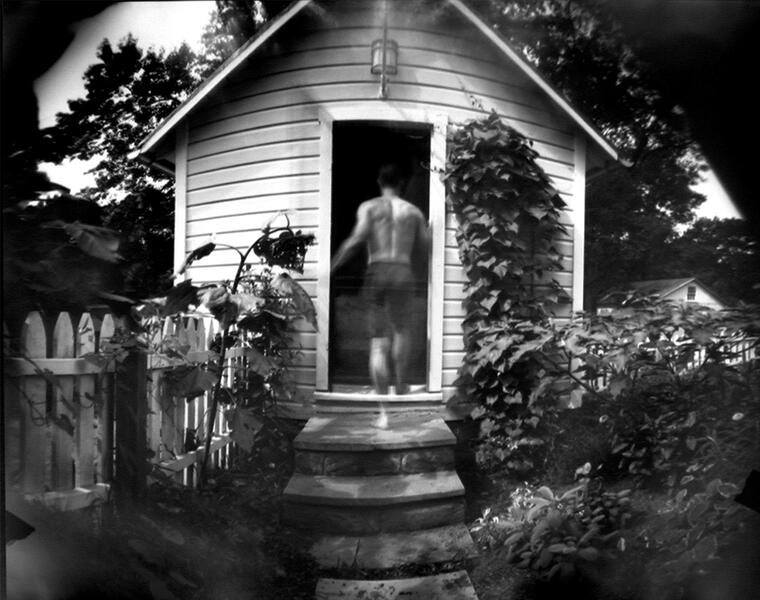 untitled (TC113 August 2003)23 minute exposure farm in the Plains Virginia 2006 16"x20" gelatin silver print
untitled (TC113 August 2003)23 minute exposure farm in the Plains Virginia 2006 16"x20" gelatin silver print -
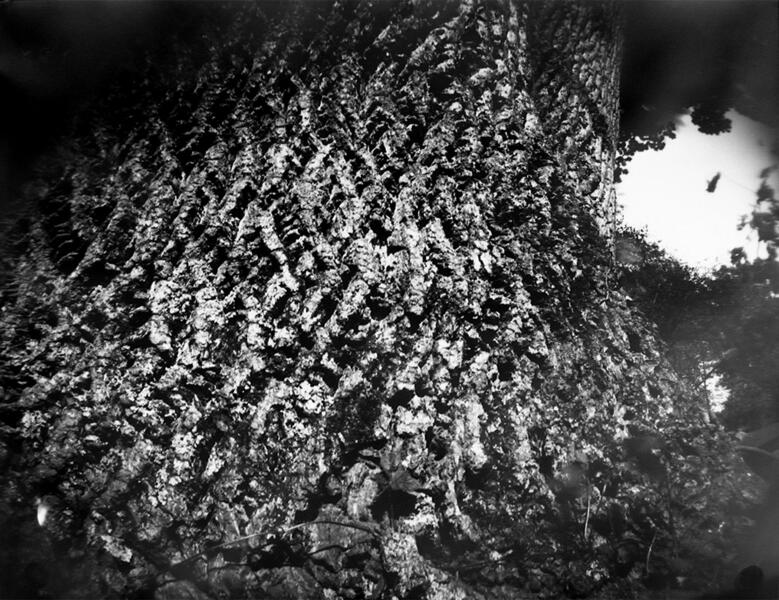 untitled (TC176 2004)40 minute exposure tree in The Plains Virginia 16"x20" gelatin silver print 2004
untitled (TC176 2004)40 minute exposure tree in The Plains Virginia 16"x20" gelatin silver print 2004 -
 untitled (IMG_1753)pinhole photograph of a Gestalt perception image 16"x20" gelatin silver print 2002
untitled (IMG_1753)pinhole photograph of a Gestalt perception image 16"x20" gelatin silver print 2002 -
 untitled (IMG_1742)A Chipotle napkin: instructions for eating a burrito gelatin silver print 16"x20" 2007
untitled (IMG_1742)A Chipotle napkin: instructions for eating a burrito gelatin silver print 16"x20" 2007 -
 untitled (IMG_1751)A psychology experiment in "active" and "passive" learning gelatin silver print 16"x20" 2007
untitled (IMG_1751)A psychology experiment in "active" and "passive" learning gelatin silver print 16"x20" 2007 -
 untitled (IMG_1736)A psychology experiment in perception gelatin silver print 16" x 20" 2007
untitled (IMG_1736)A psychology experiment in perception gelatin silver print 16" x 20" 2007 -
 untitled (IMG_1790)Pinhole photograph of the cover of "Before Photography," chemically abused after printing 16"x20" one-of-a-kind gelatin silver print 2008
untitled (IMG_1790)Pinhole photograph of the cover of "Before Photography," chemically abused after printing 16"x20" one-of-a-kind gelatin silver print 2008







































































